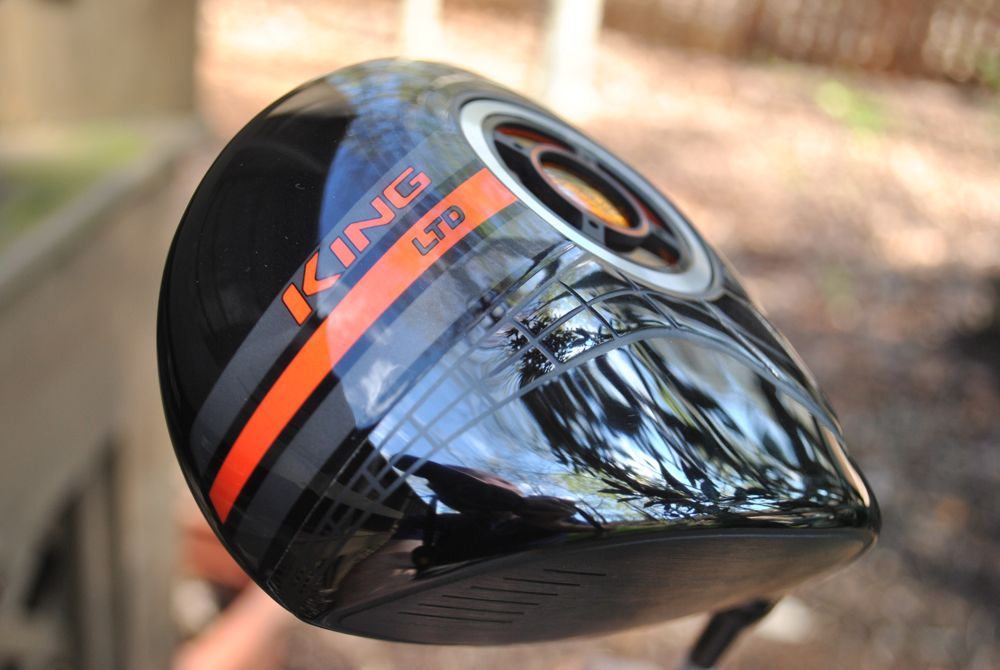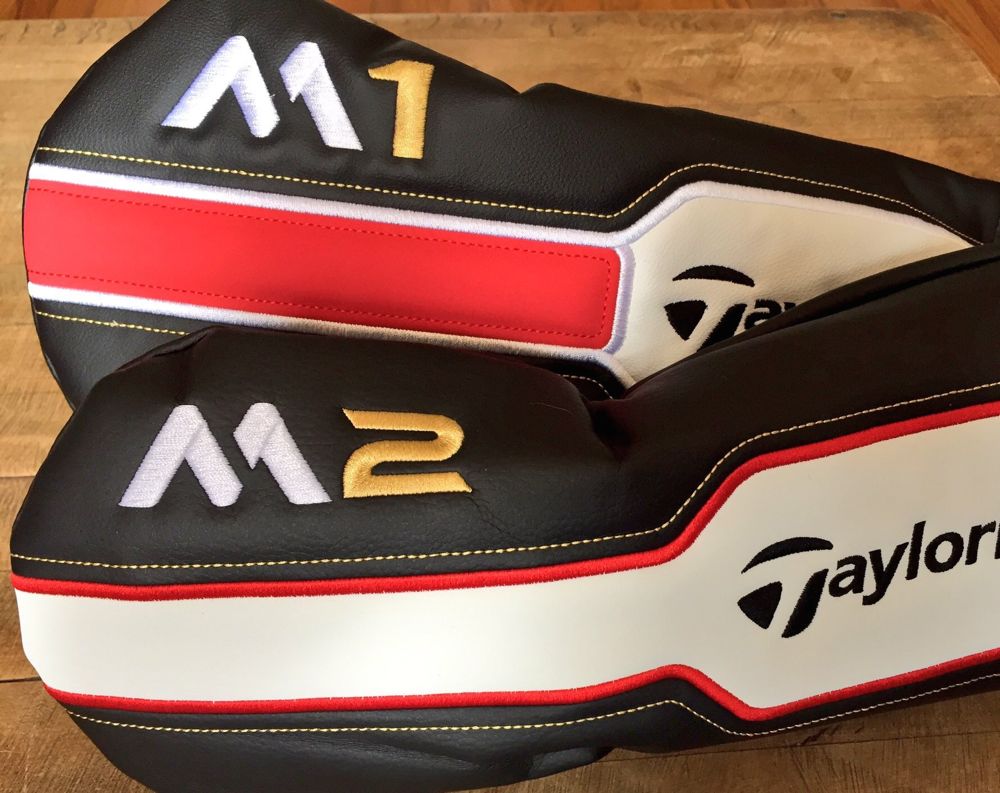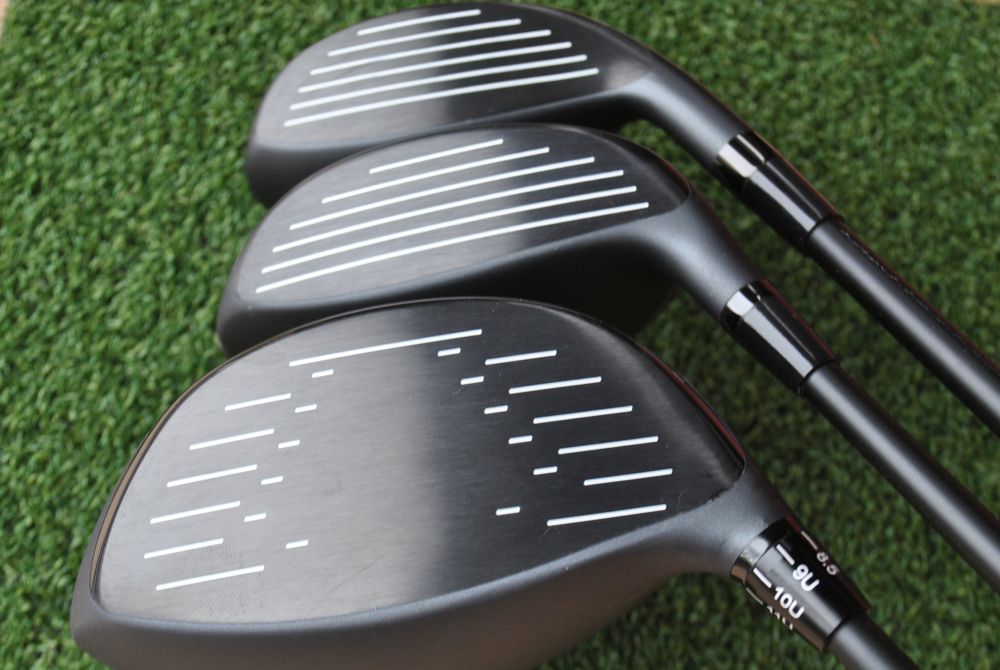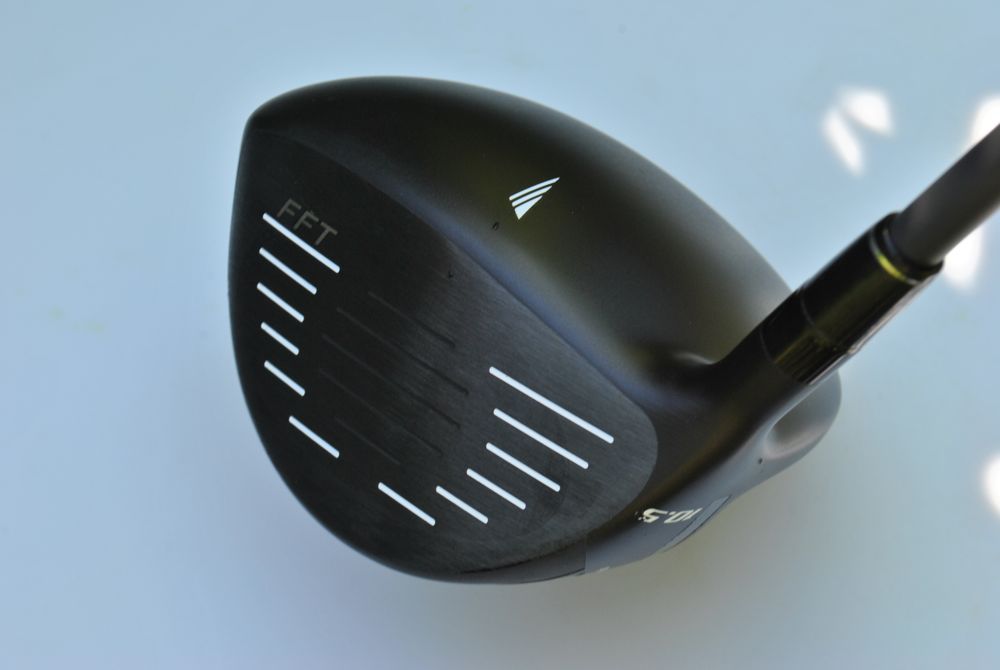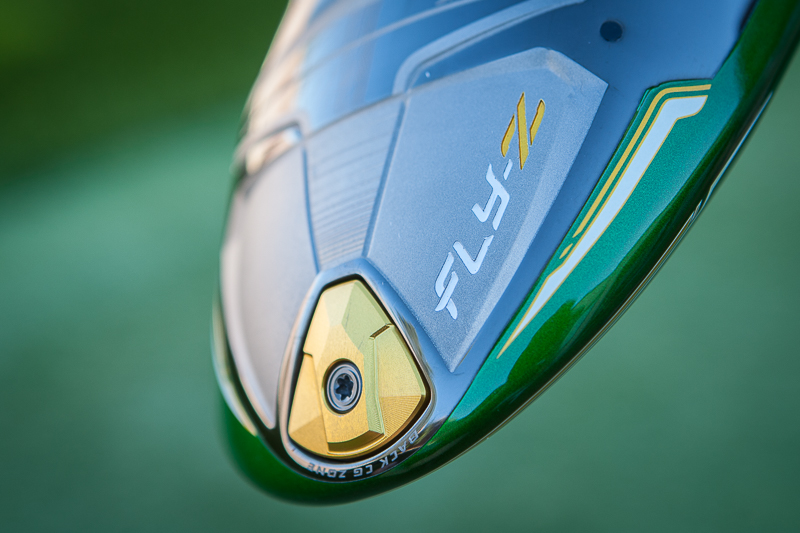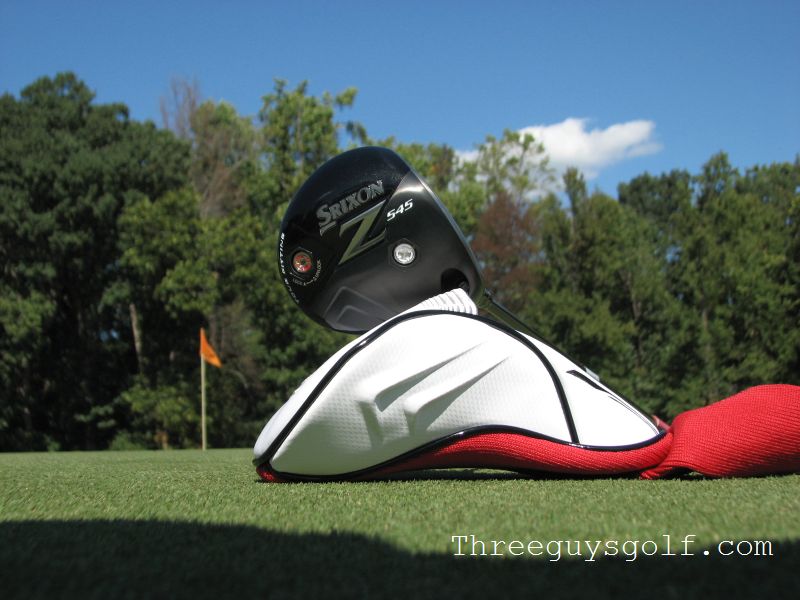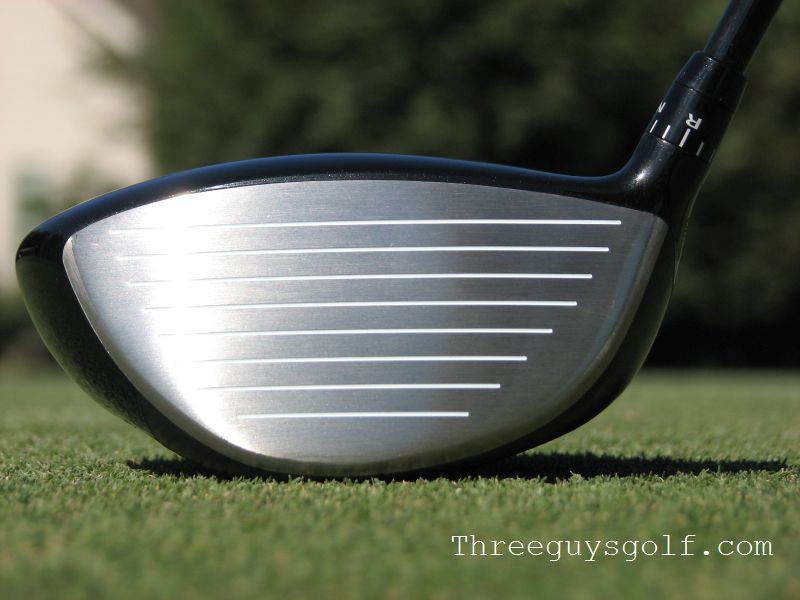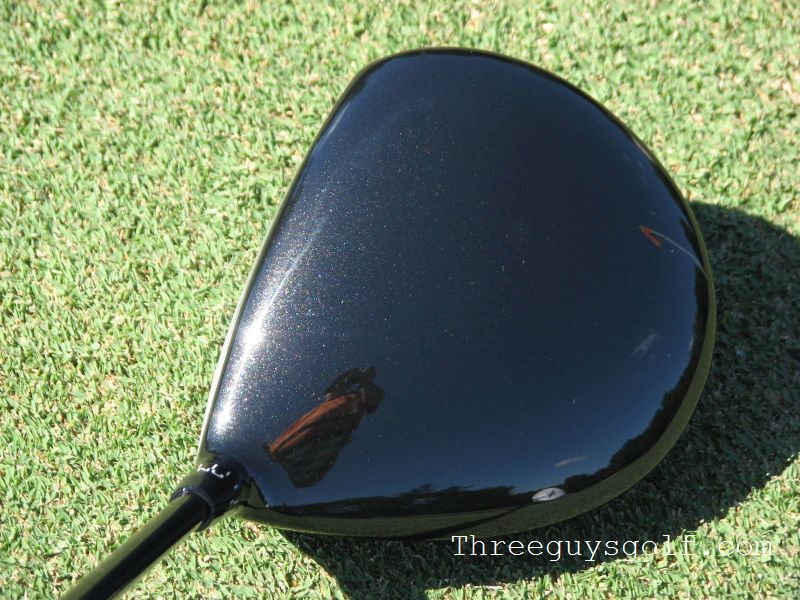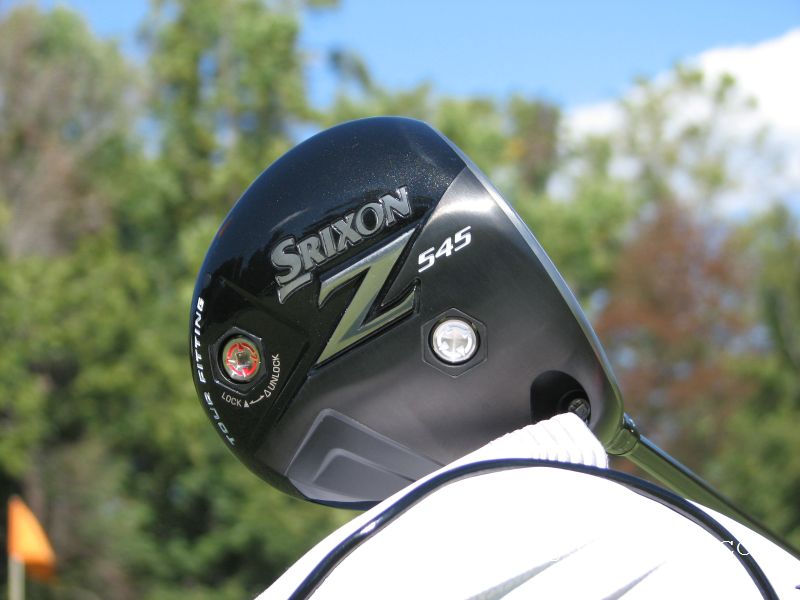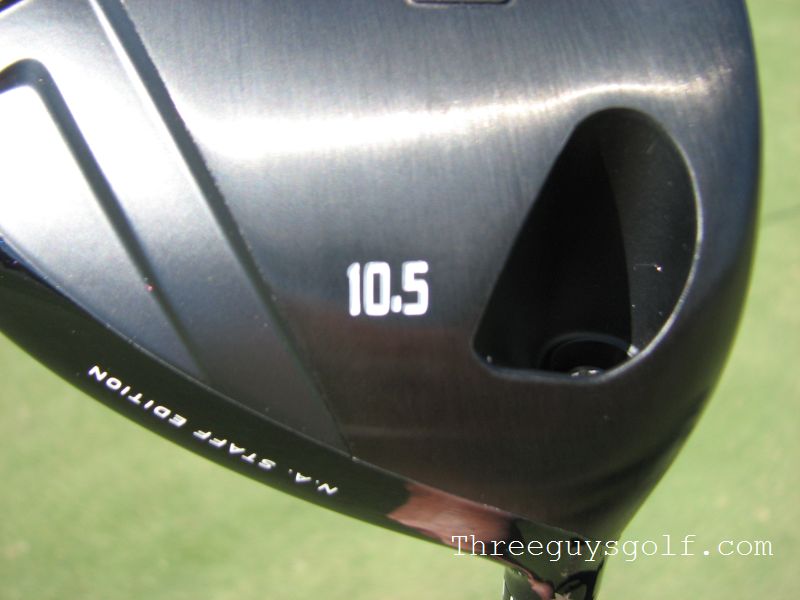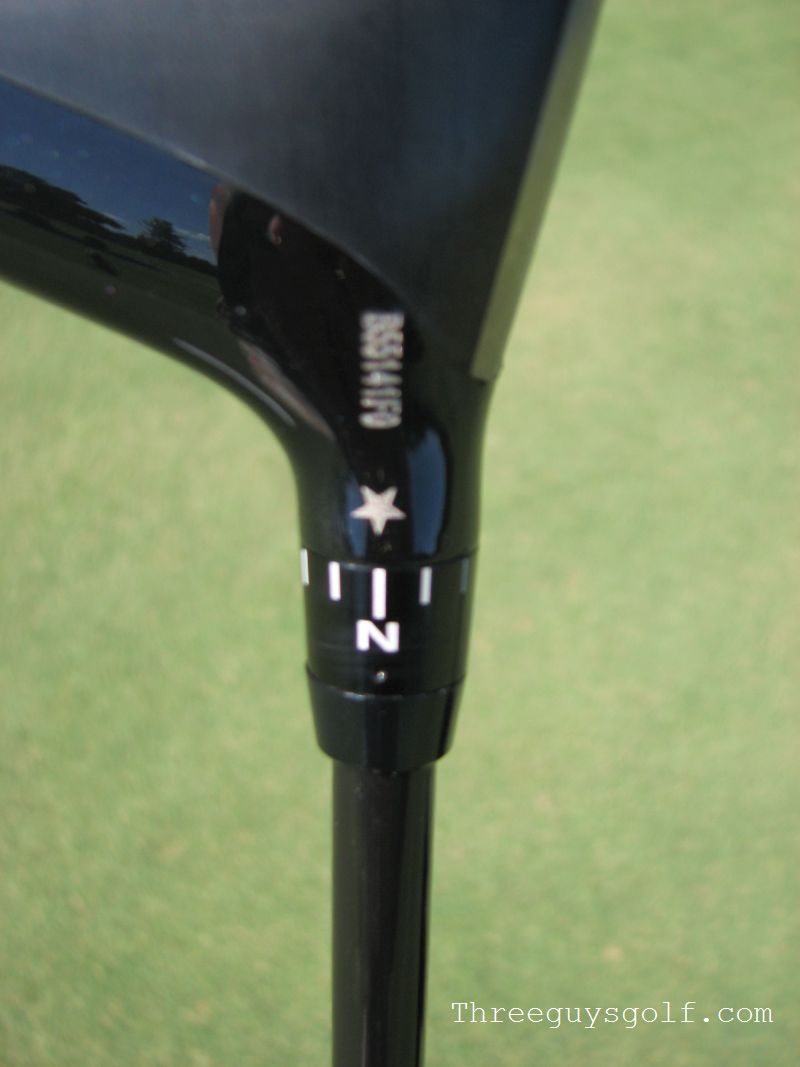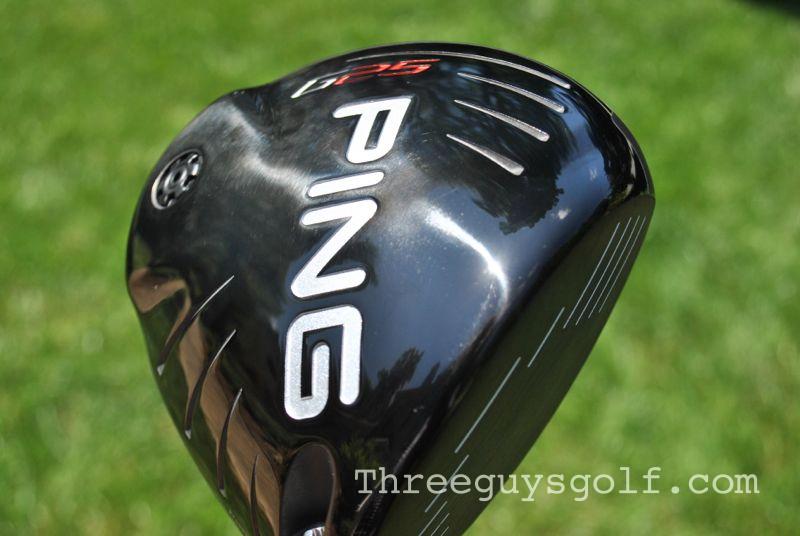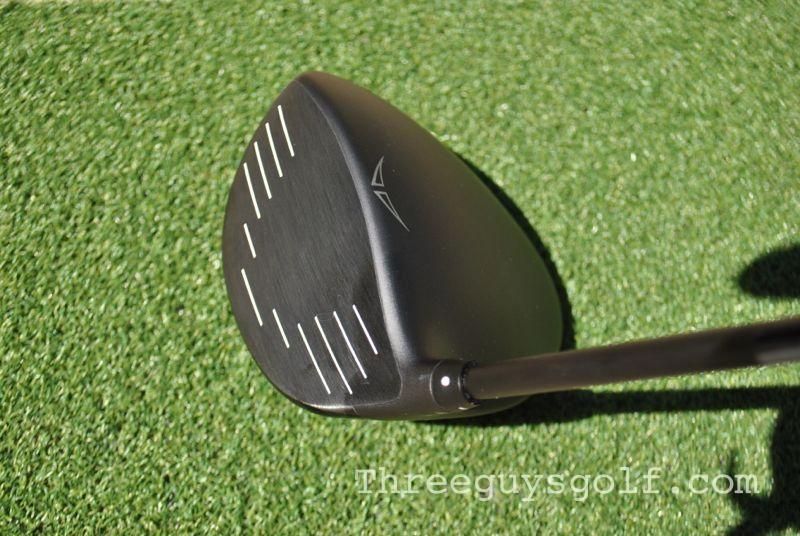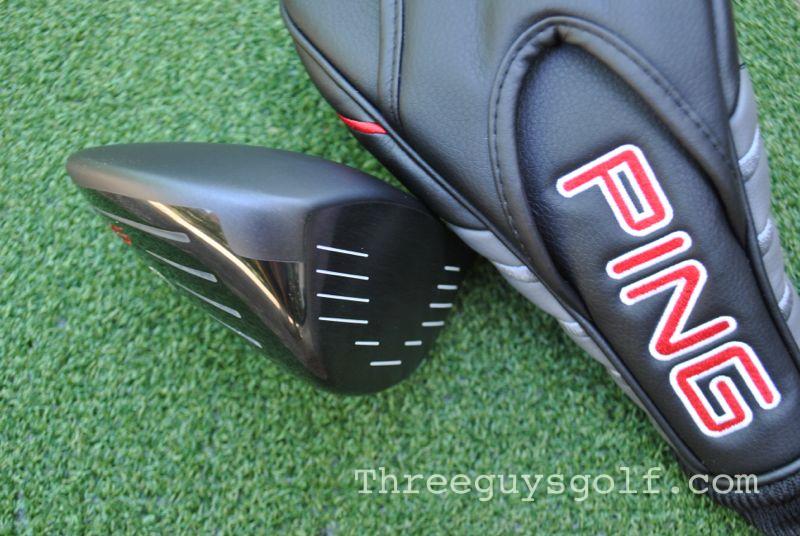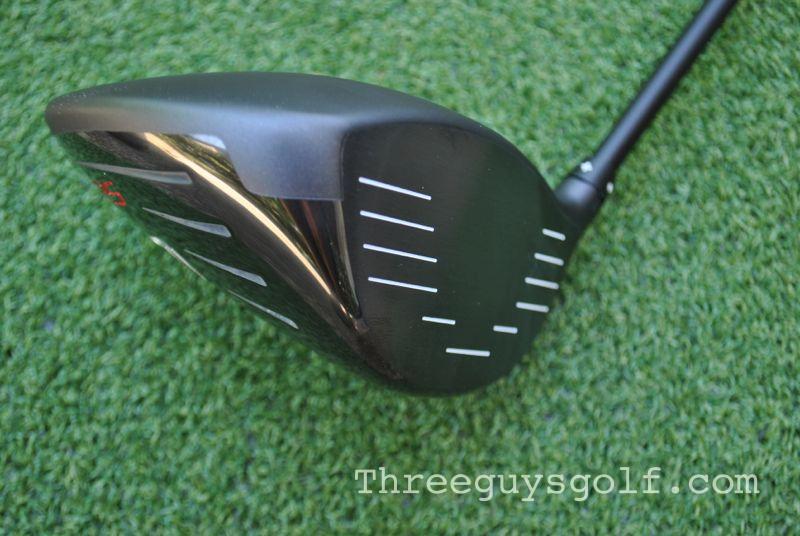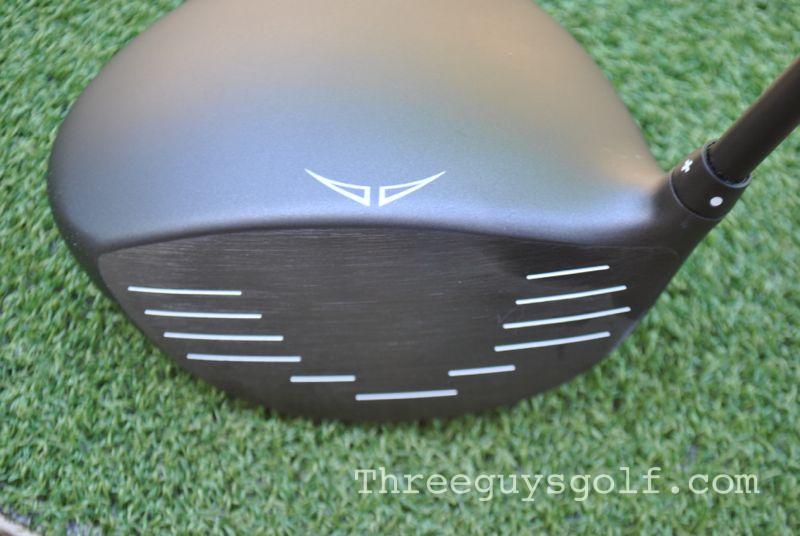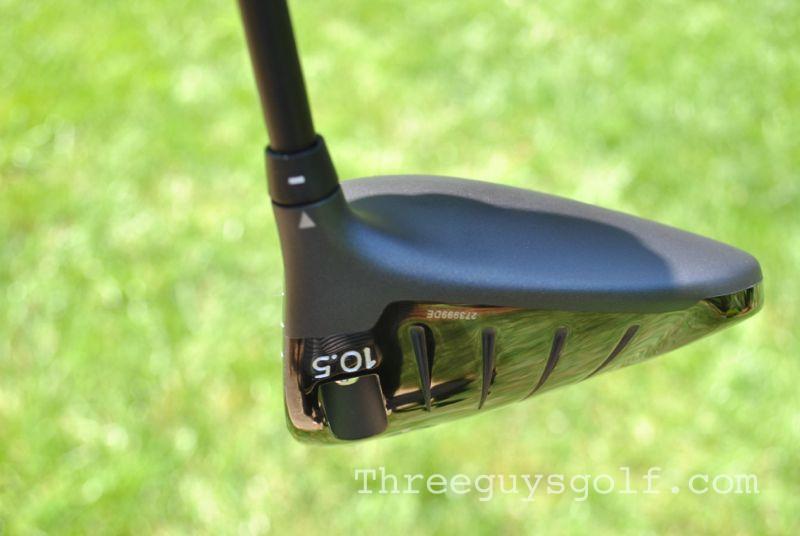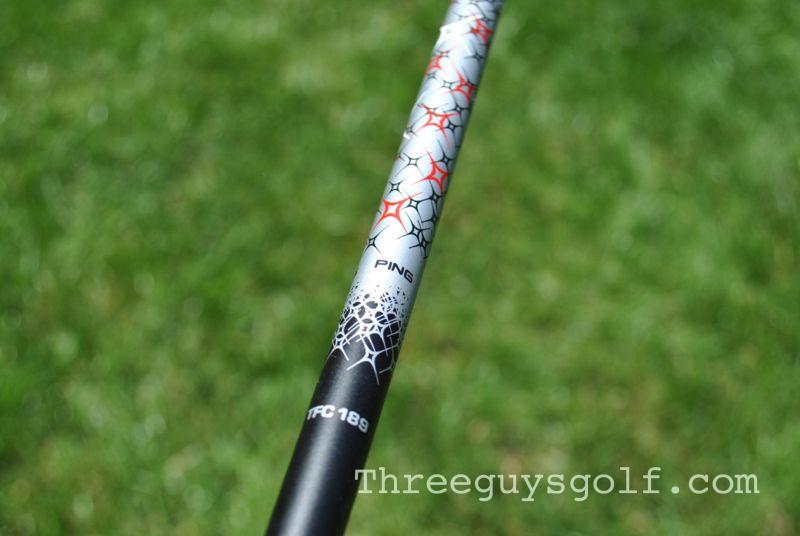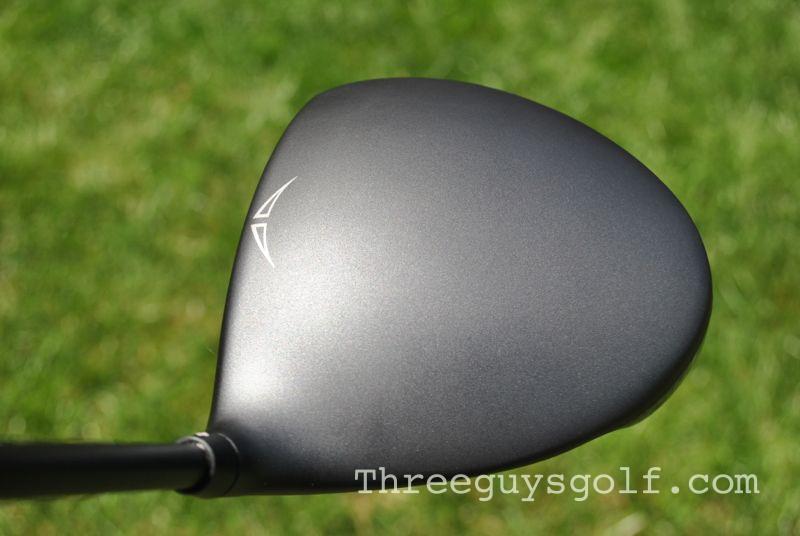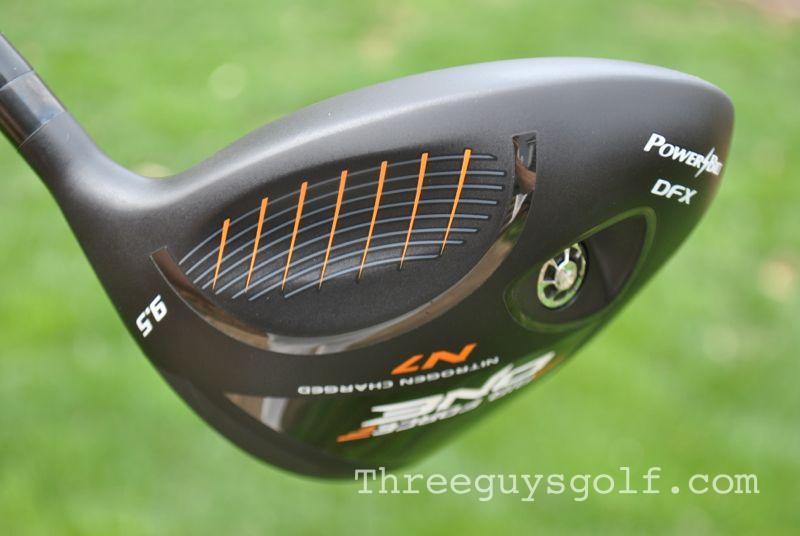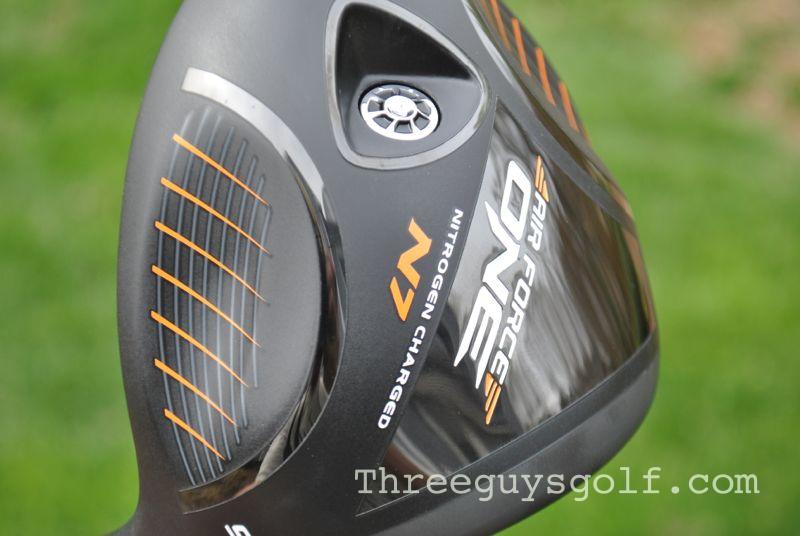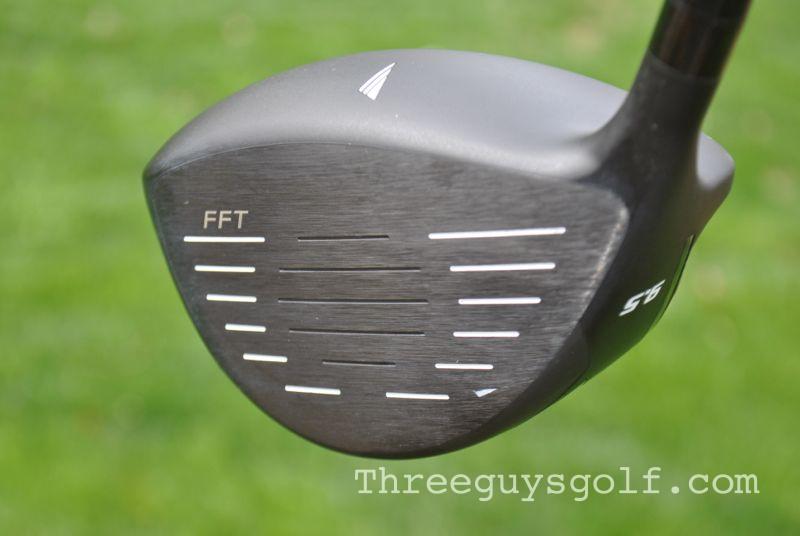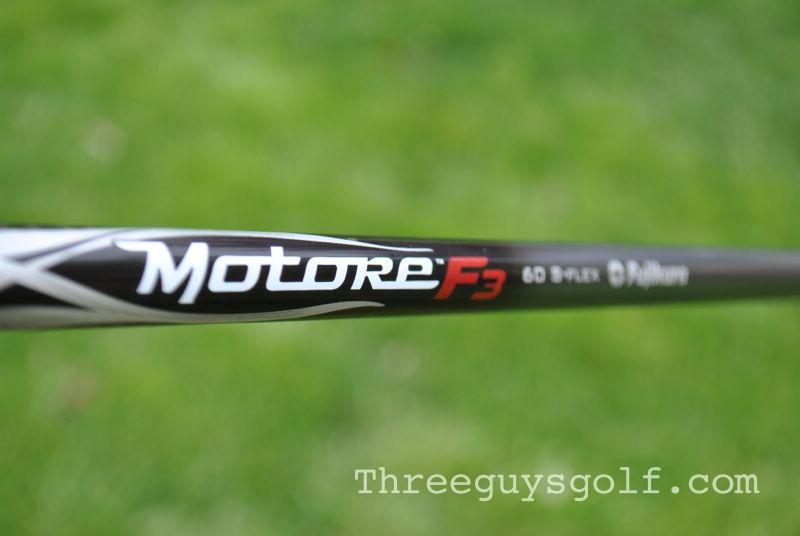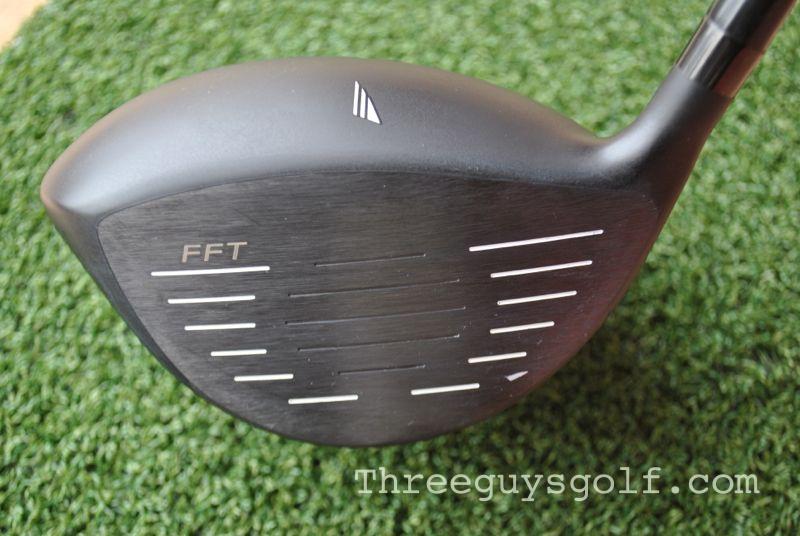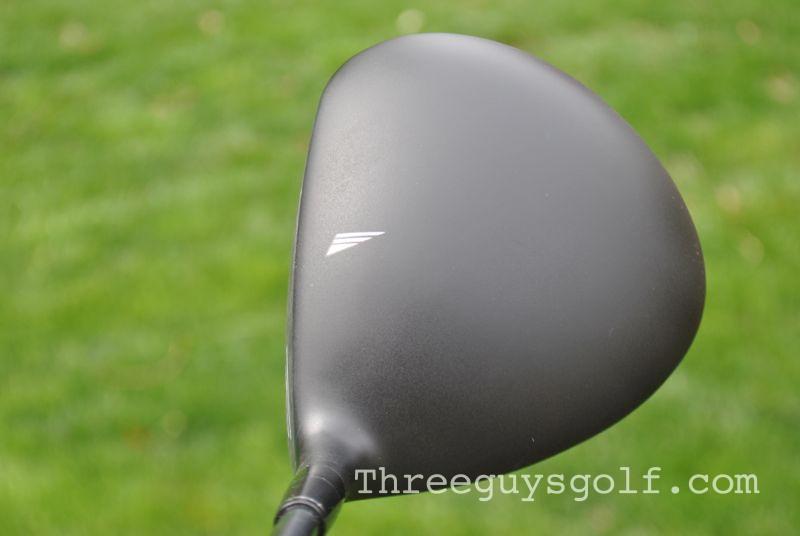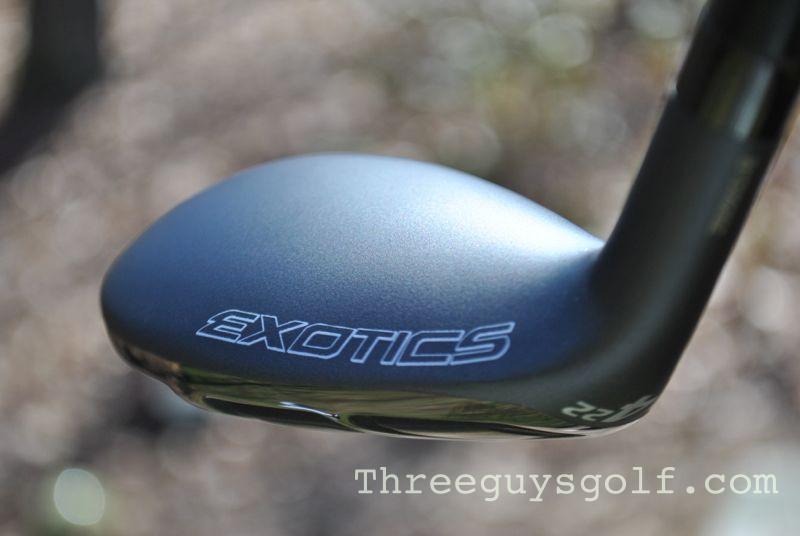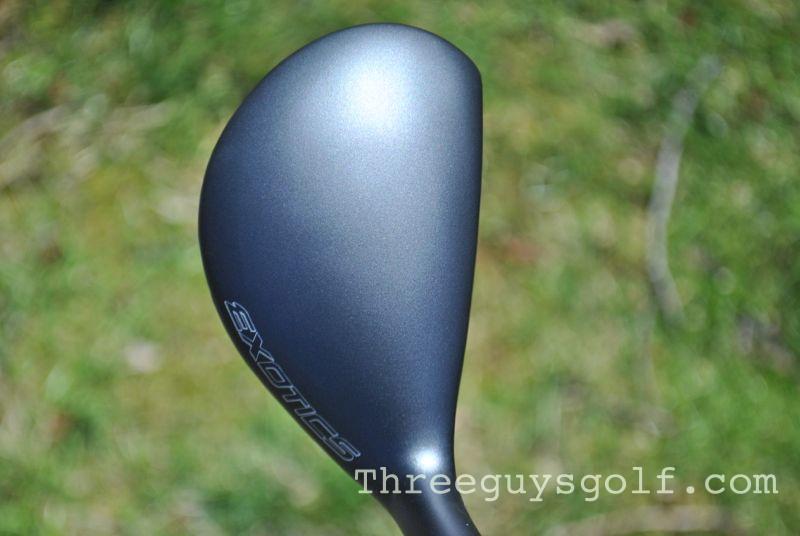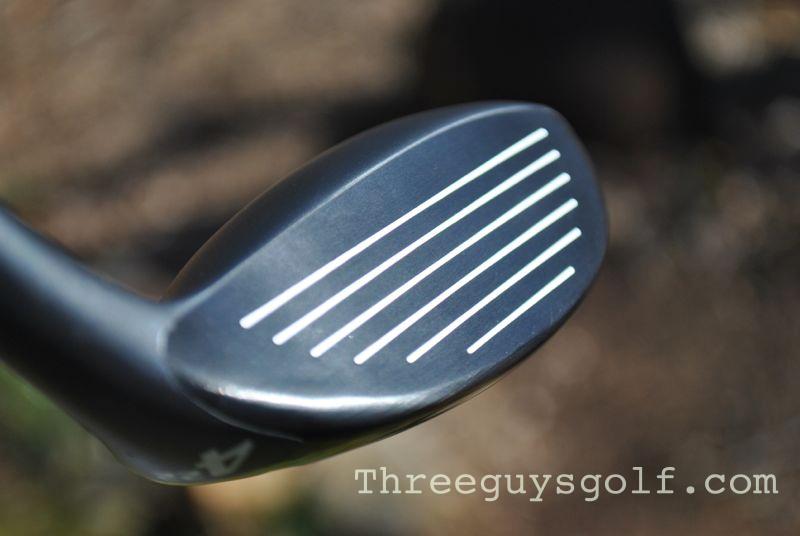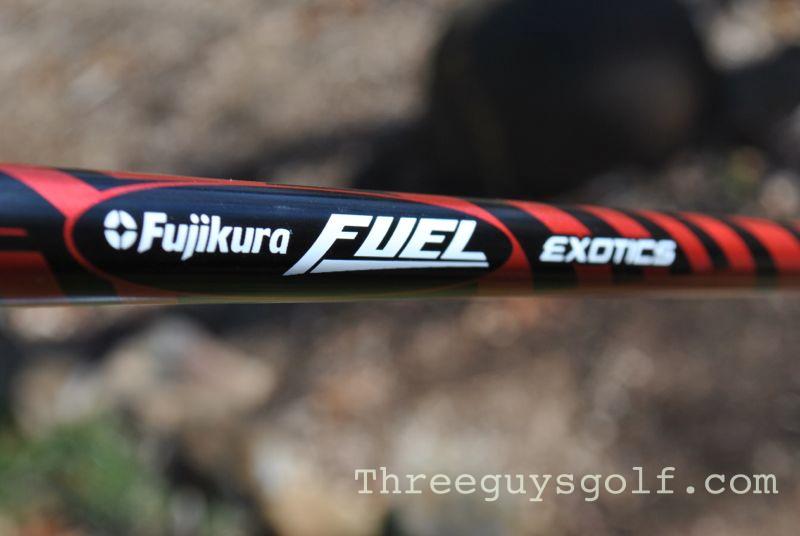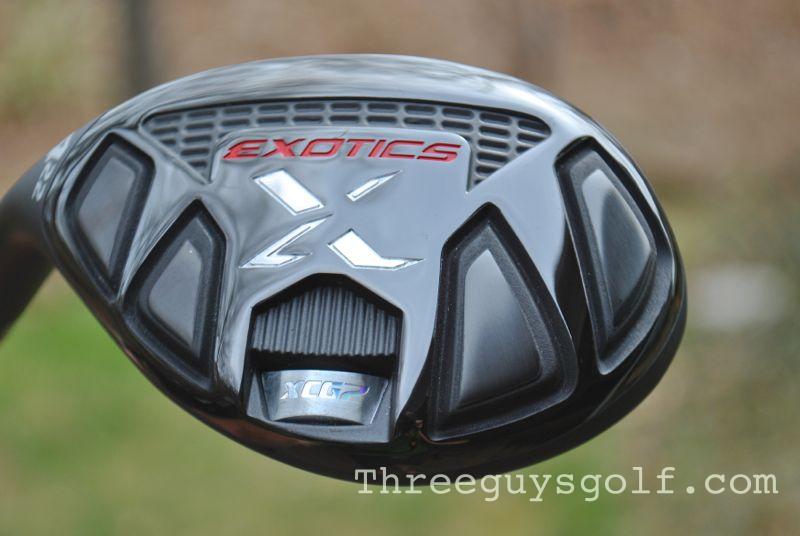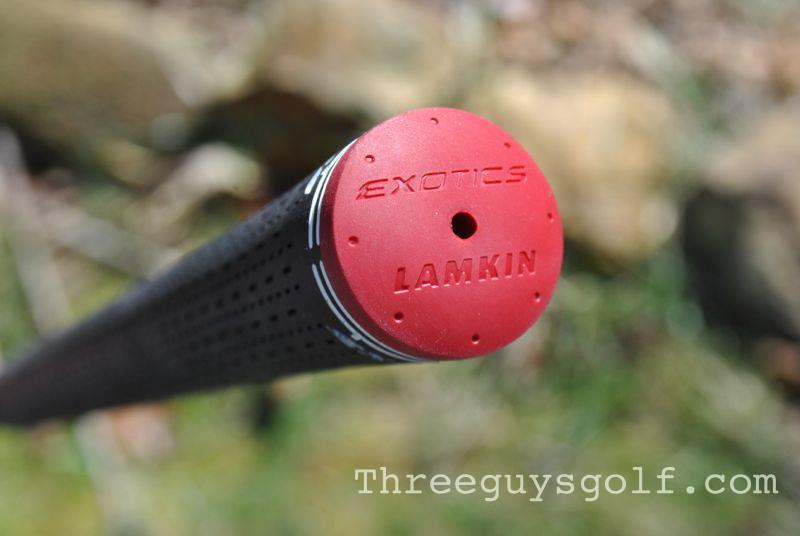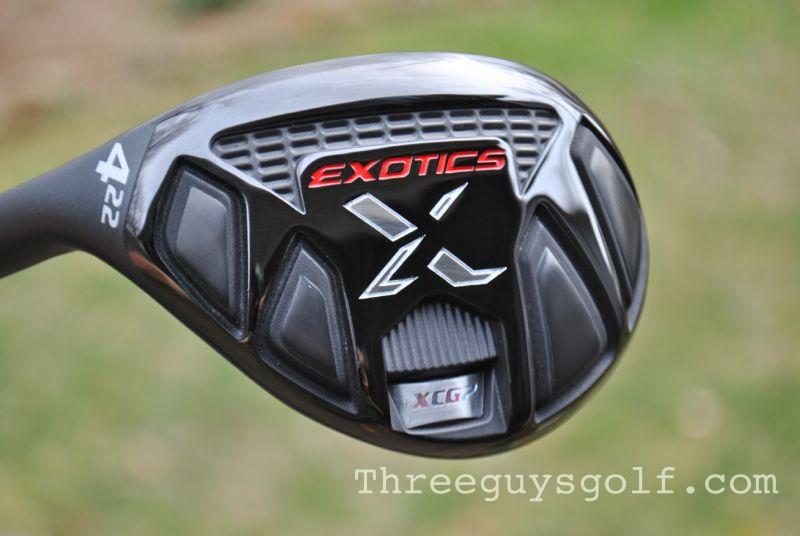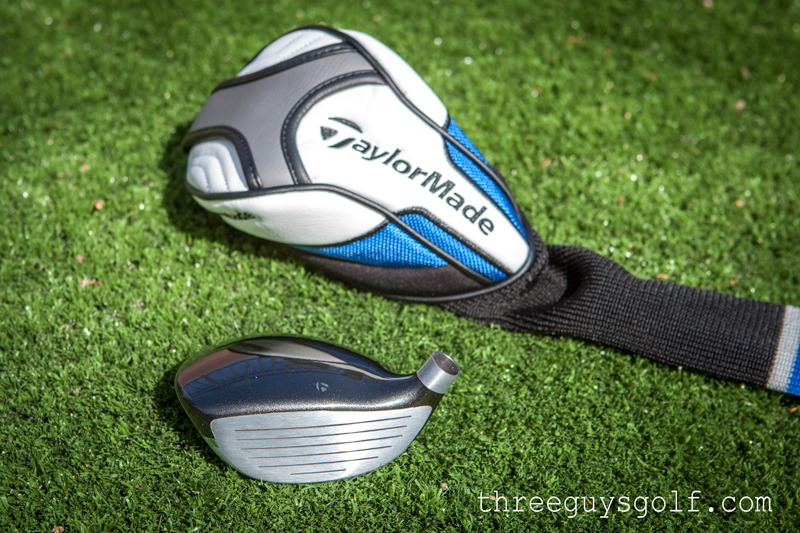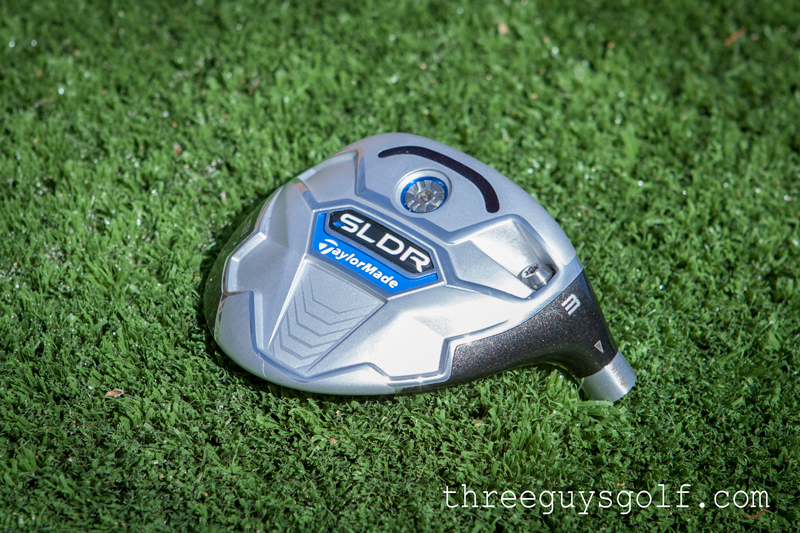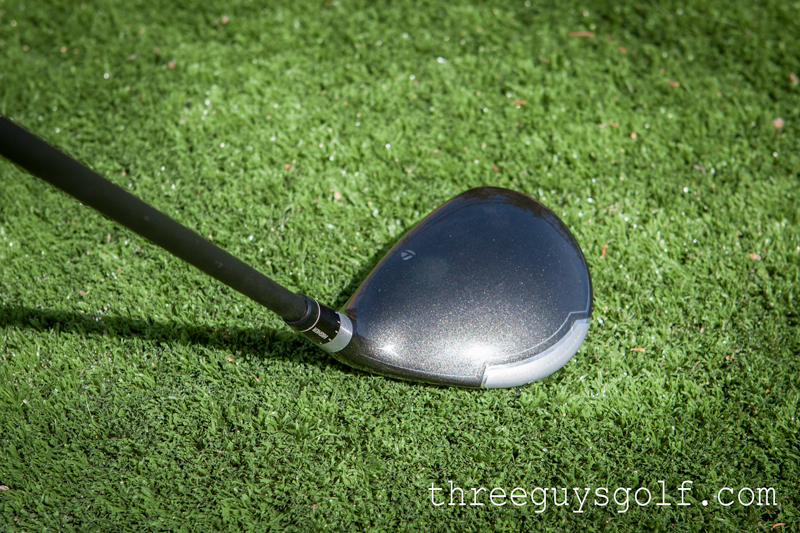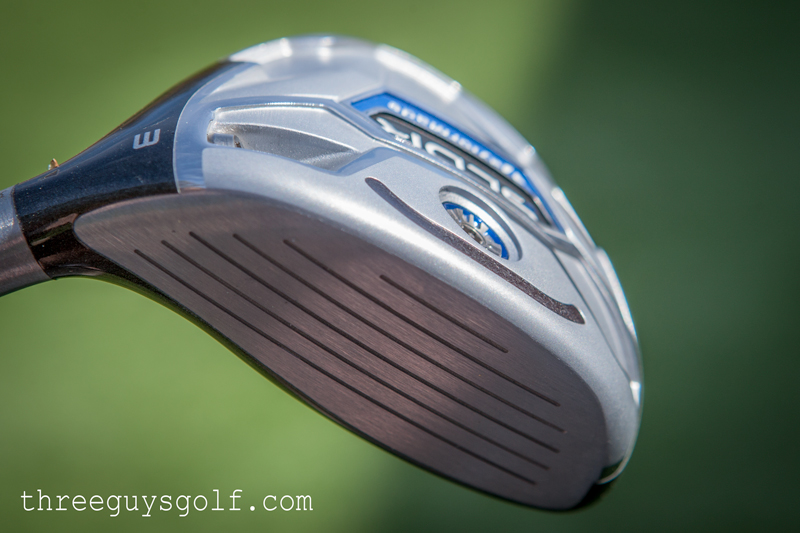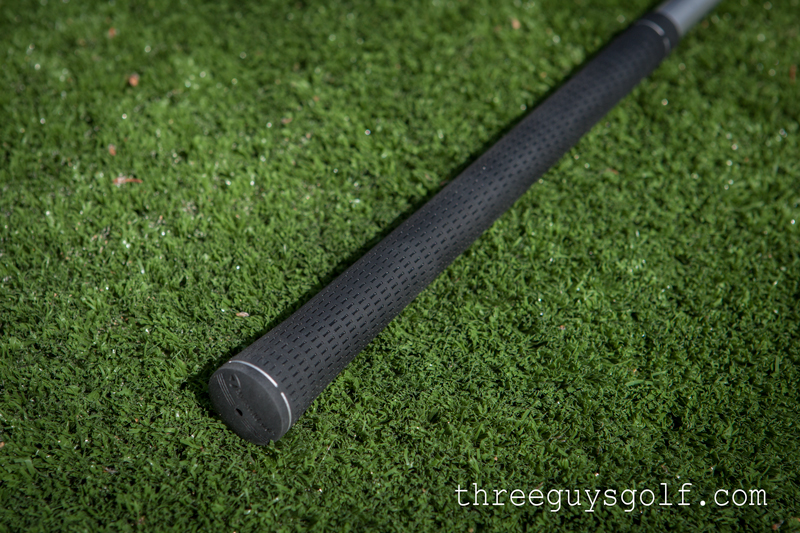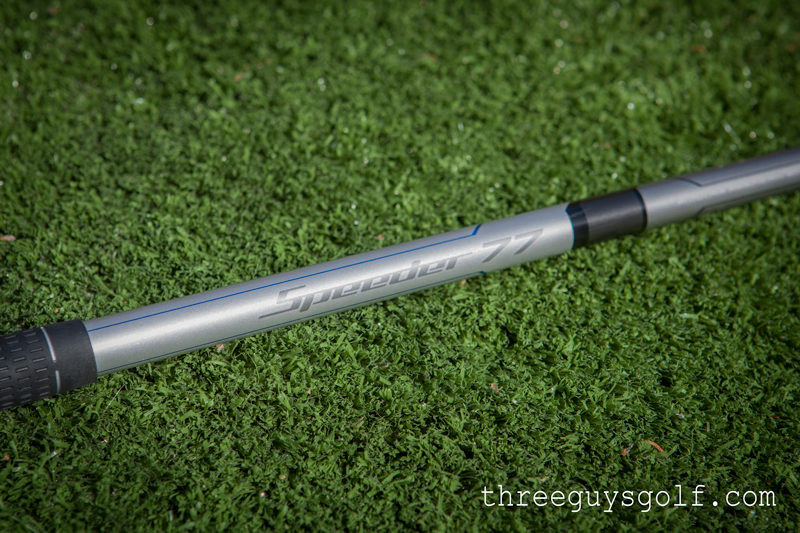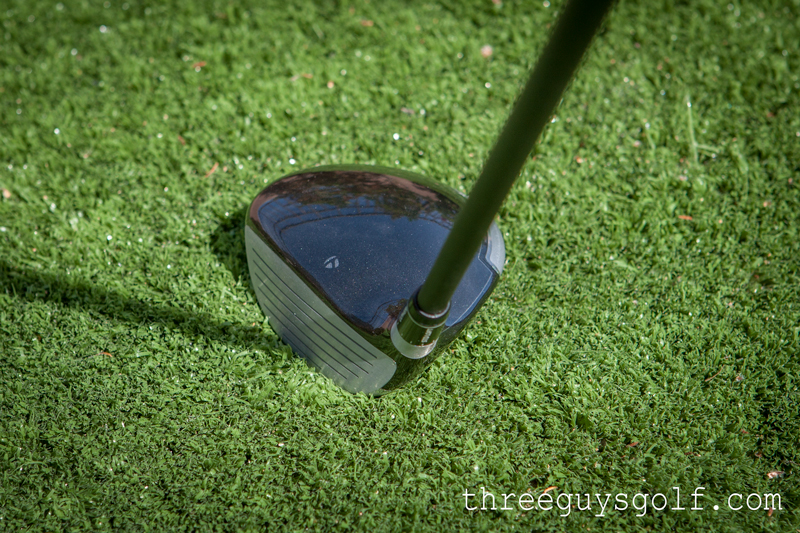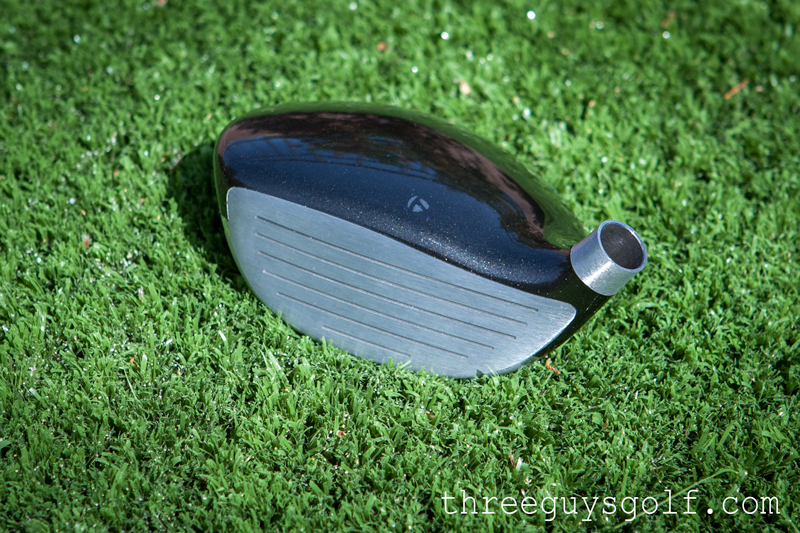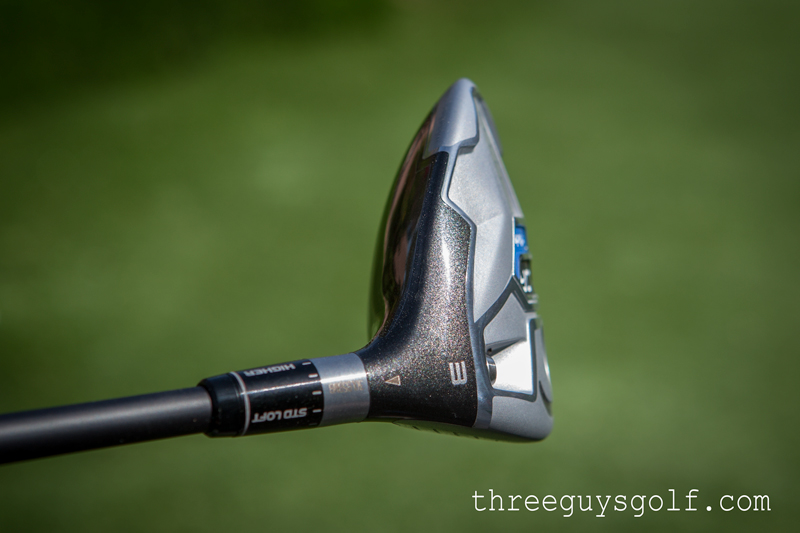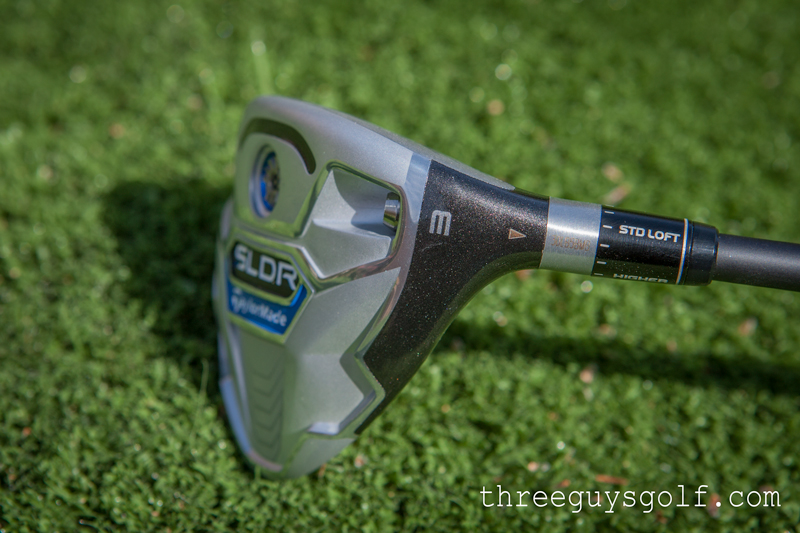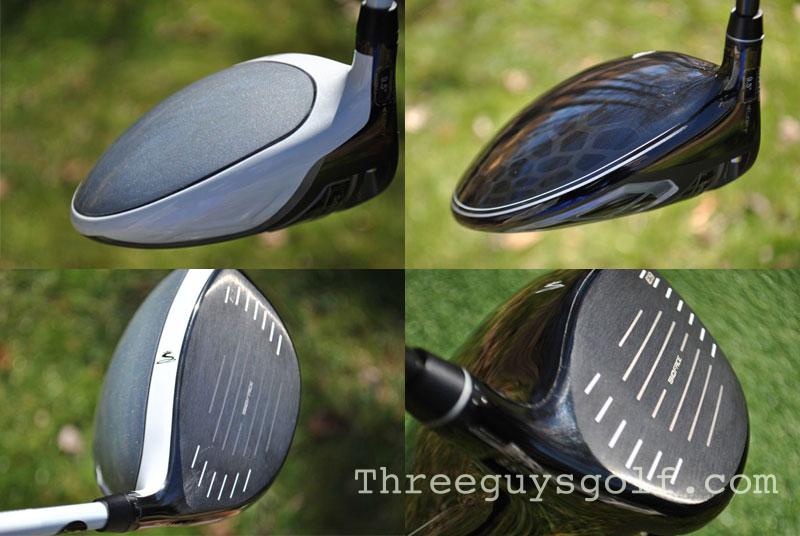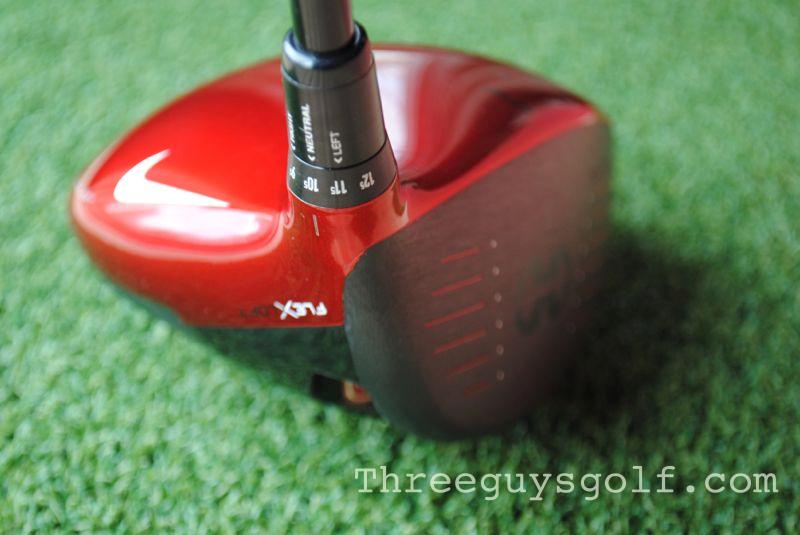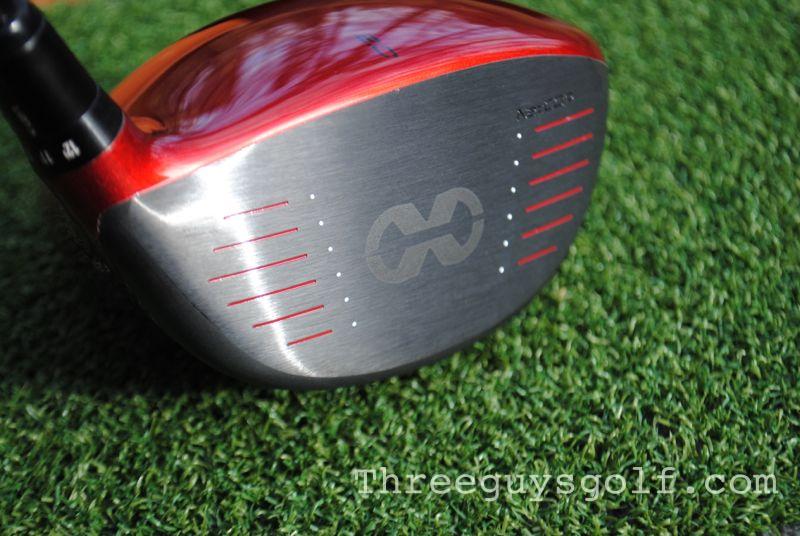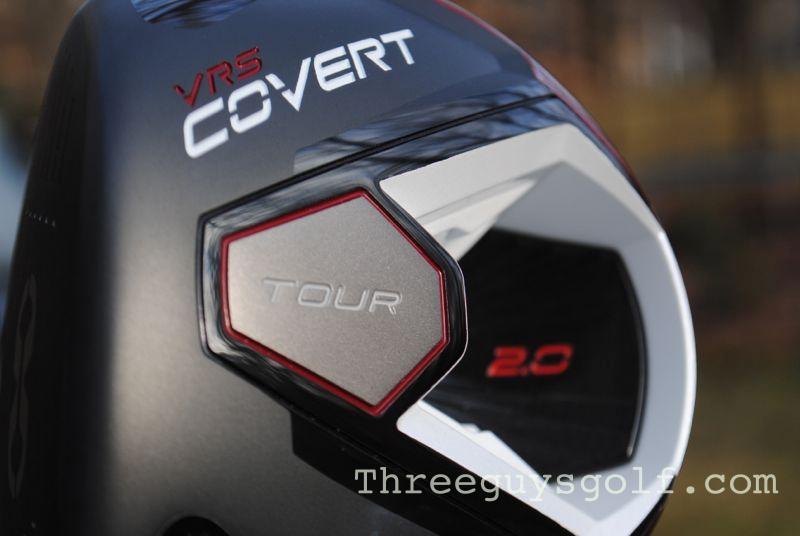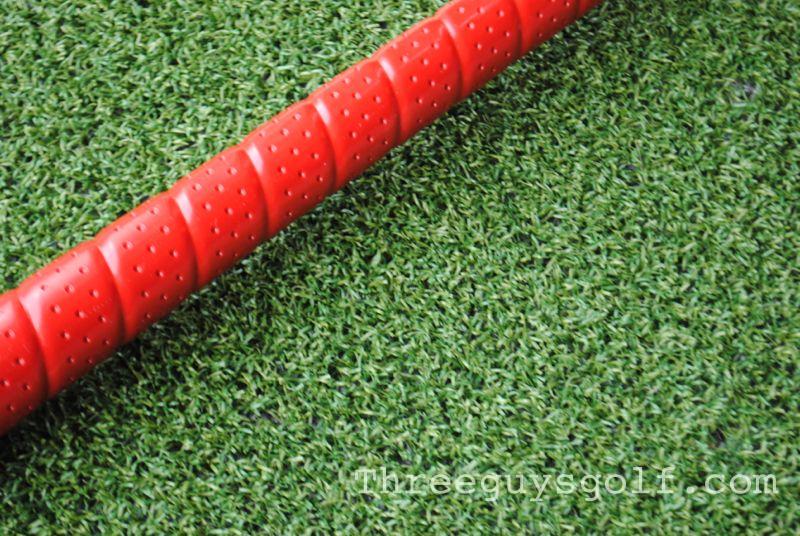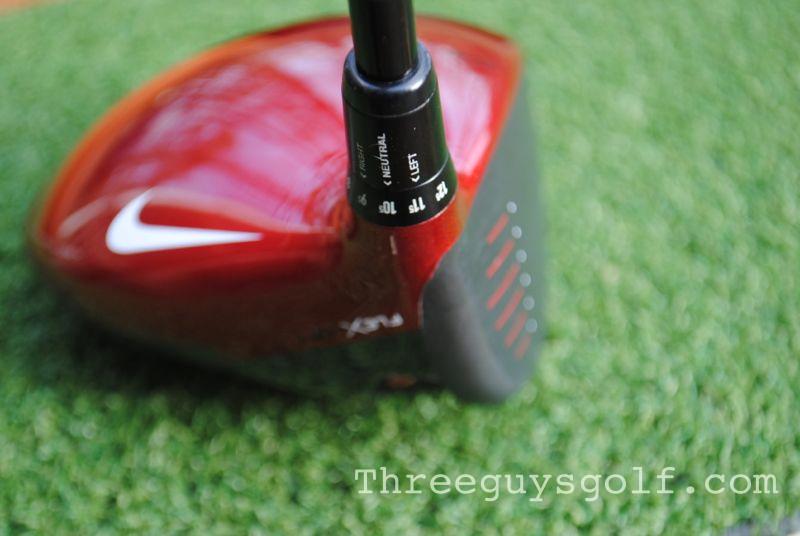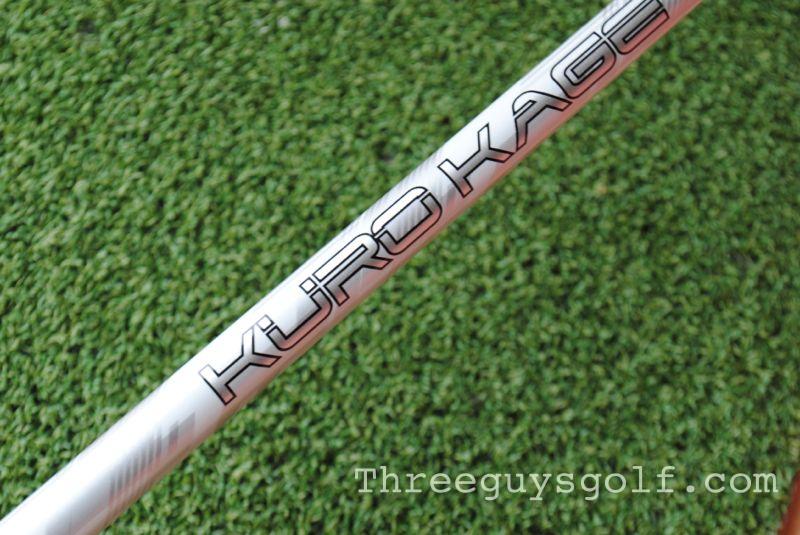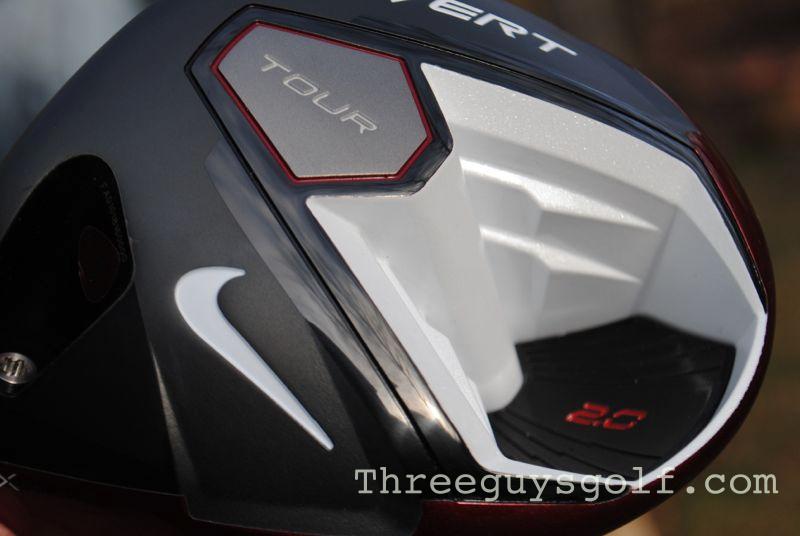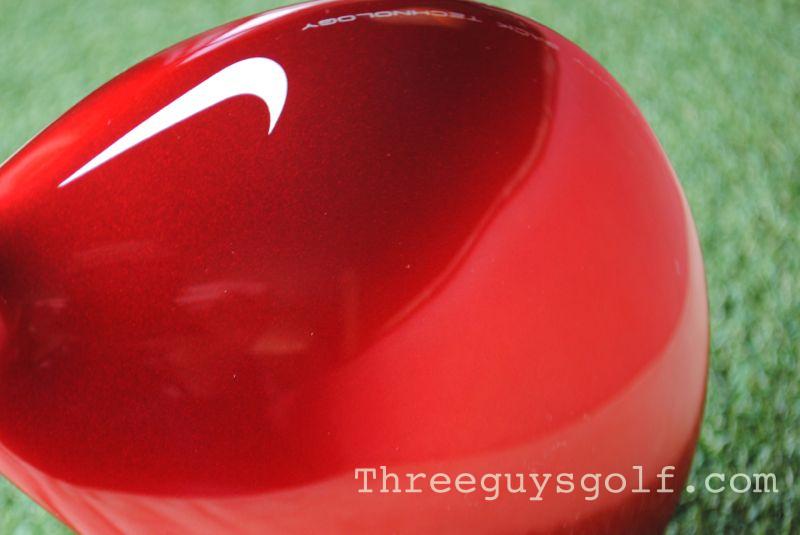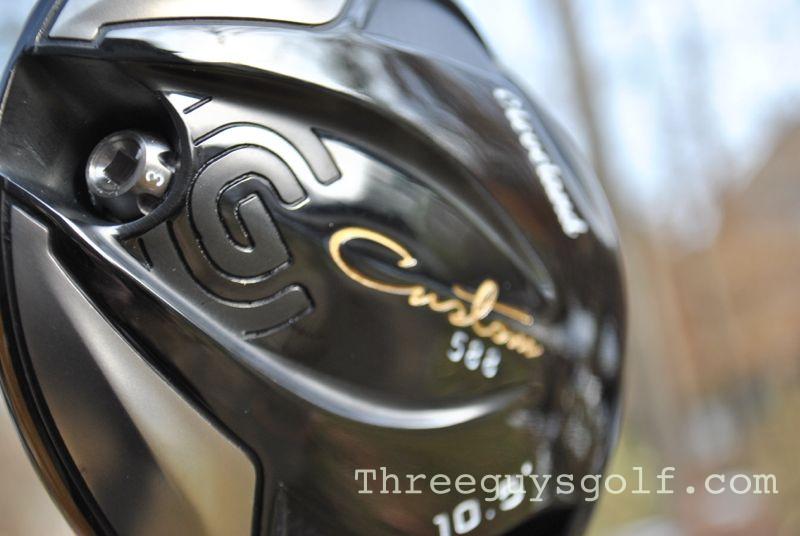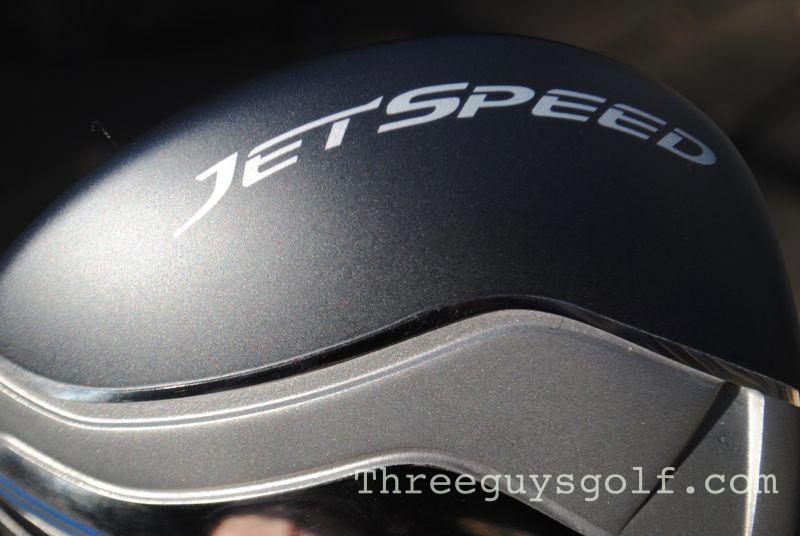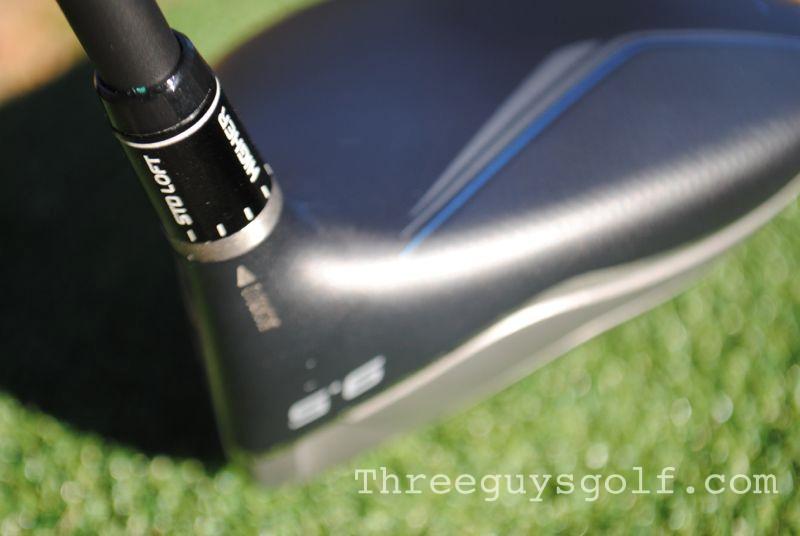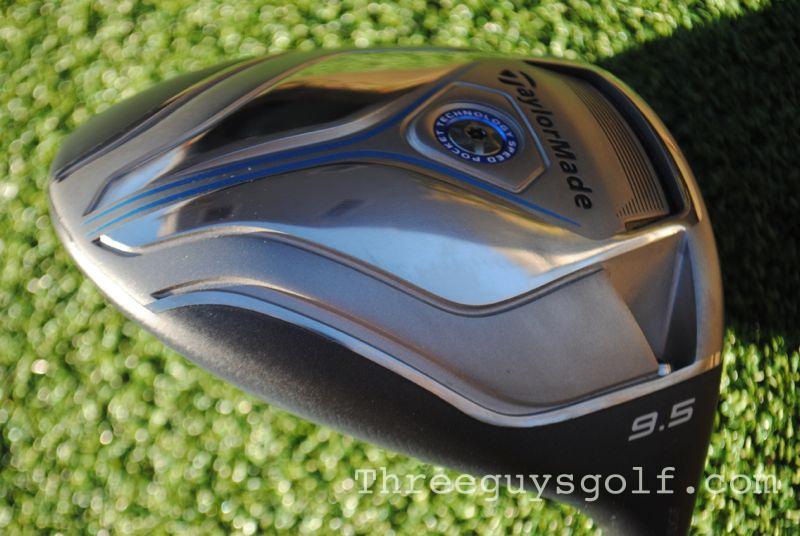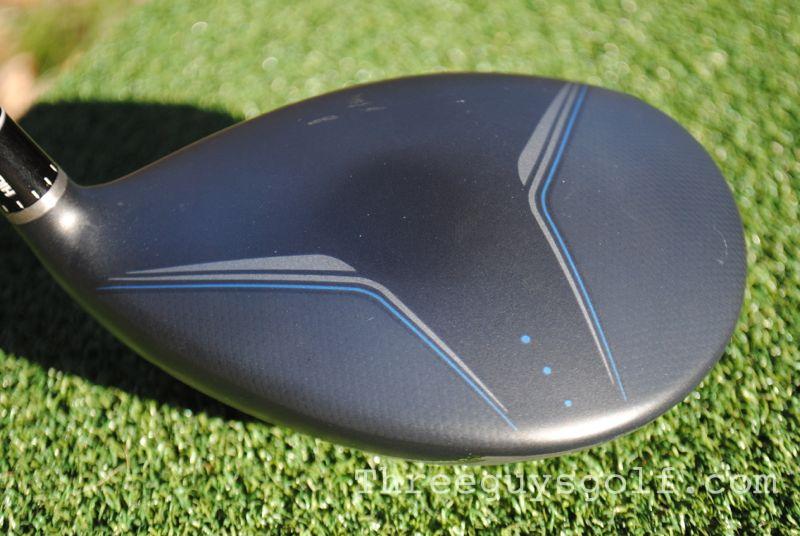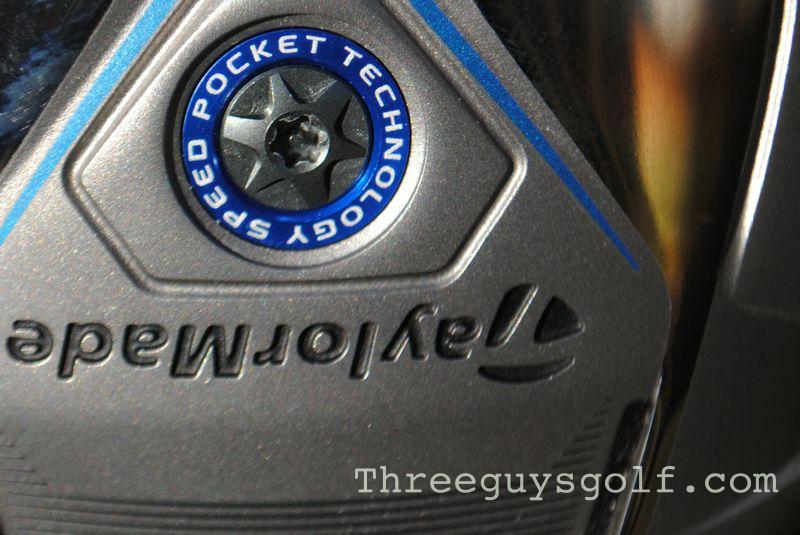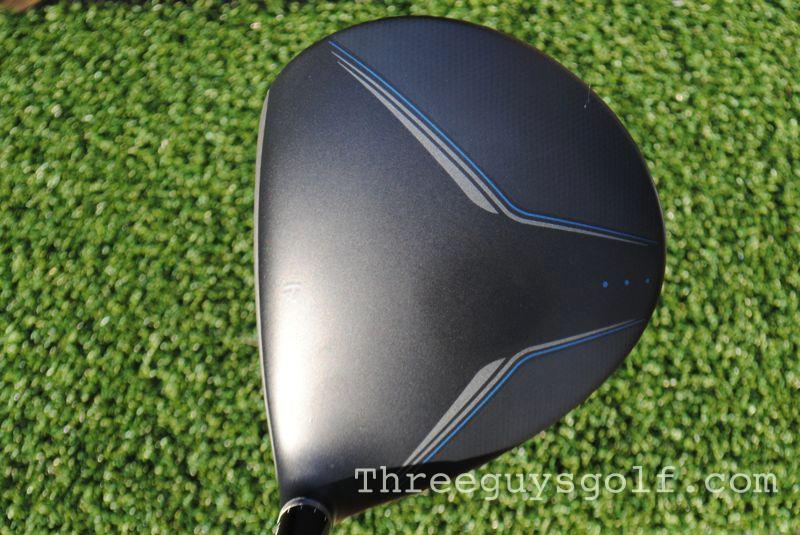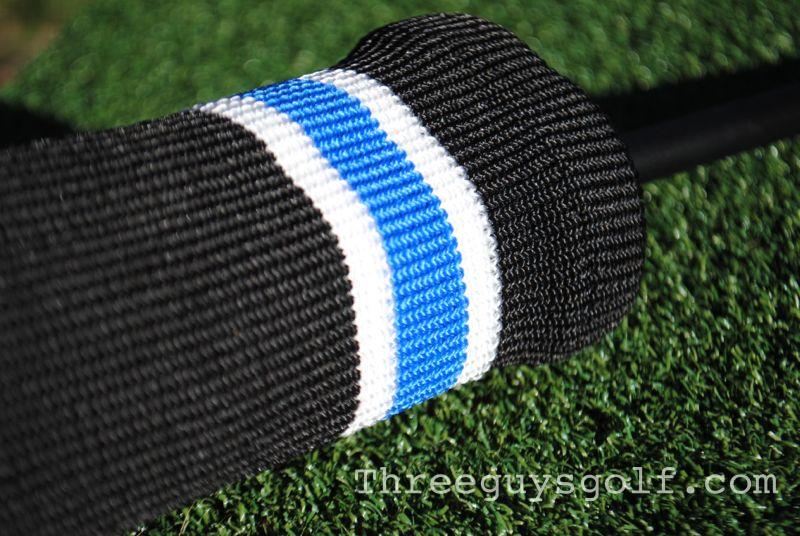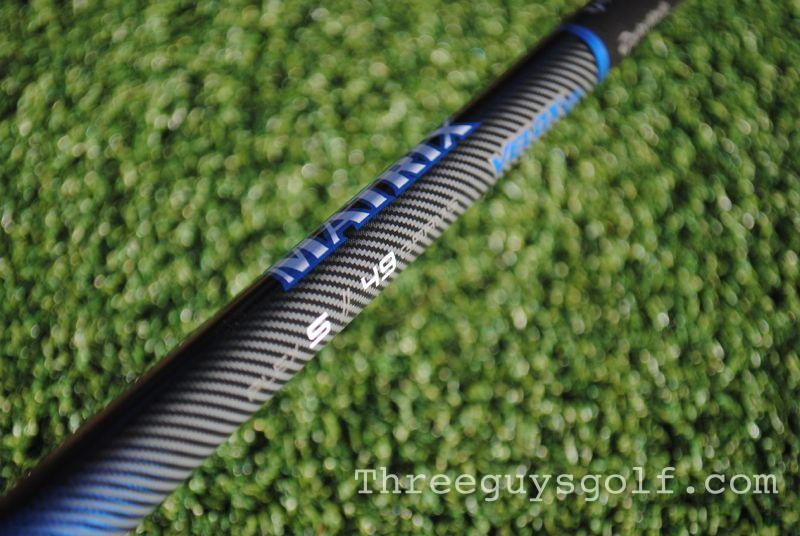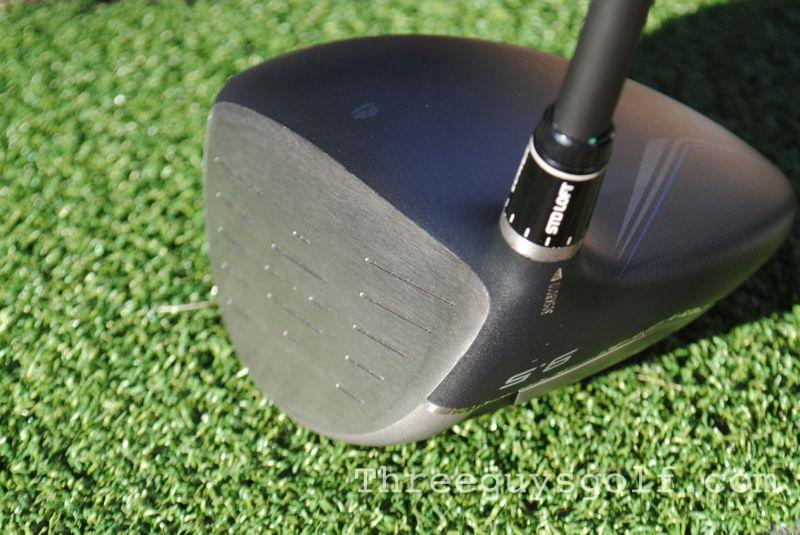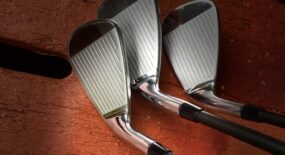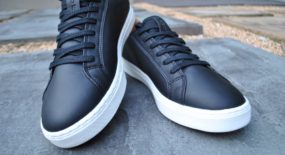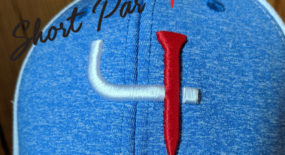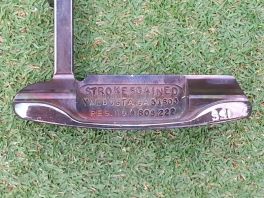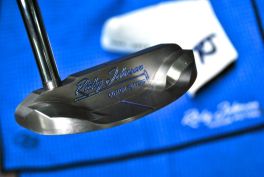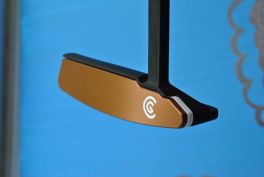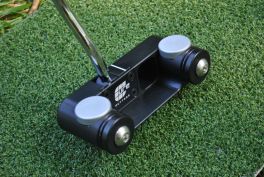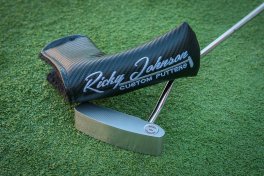TaylorMade has caught its fair share of heat over the years for promises such as “17 yards longer”. I guess all the jokes left a little sting because you won’t find any such claims for the new M1 and M2 drivers, yet this may be the first driver that I actually think goes farther than most.
Continue reading
A few months ago I had a revelation. After carrying the Tour Exotics 4 hybrid in my bag for a little over year and easily declaring it the best club in my bag, I decided that maybe I could change my life for the better by getting as many Tour Exotics clubs in my arsenal as possible. But this wasn’t just all about me, I promise. I was also dying to get to the bottom of the Tour Exotics, well, mystery. Let me explain:
Continue reading
With the possible exception of the ball itself there is no more tightly regulated piece of equipment in golf than the driver. Since 1998 the USGA and R&A have capped the Coefficient of Restitution (COR) for drivers at .822. That means that since 1998 driver faces haven’t gotten any hotter. Since 2002 the maximum allowable head size has been 460cc. That means drivers haven’t gotten any bigger.
Continue reading
It’s been well documented that the state of Adams Golf is somewhat of in flux. I can only be grateful that other golf media outlets have put in the time in to tell the very interesting story about one of the more notable manufacturers in the business. What has gotten lost in all the hoopla surrounding the Adams story is the fact that they’re still manufacturing outstanding golf clubs, and we got our hands on one that I believe will help solidify Adams’ name as a premier club maker.
Continue reading
I love golf. I know that sounds like a really obvious statement coming from a guy who writes about golf, golf apparel, golf equipment, golf salad, boiled golf, golf scampi, you get the picture. Thanks to DVR, Golf Channel, and my patient, long-suffering, and quasi-narcoleptic wife I watch a lot of televised golf. Not just competitive golf, either. I watch instructional shows, equipment reviews, golf travel shows, even golf reality shows. In my house everyone knows that if nobody can find anything else to watch, the Golf Channel is coming on. But until this year I have never watched a long drive competition.
This year I had to watch the Long Drive finals, because Jeff Crittenden, who made the final eight, is not only a North Carolina boy, but a friend of one of my regular golfing partners. Jeff advanced all the way to the final, where he lost in a heartbreaker when his drive of 365 yards came up 14 inches short of winner Jeff Flagg. Not bad for a guy who was planning to retire after this year because he thought he didn’t have the power to be competitive.
For those who haven’t discovered this variation on golf, the Long Drive is, well, the name’s not misleading. Founded in 1995, the Long Drivers of America is the premier organizing body for Long Drive competitions, mostly through their association with realty giant RE/MAX, sponsor of the World Long Drive Championship. The competition has grown in popularity every year since the LDA and RE/MAX teamed up to put it on in 1995. In the Open division players hit drivers with lofts in the 4-6 degree range at a grid set up in some wide-open, spacious location. What’s that? Isn’t a golf course a “wide-open, spacious location?” Not to these gentlemen. Last year Tim Burke won the open division with a drive of 427 yards. That’s just a shade over a quarter-mile. On my home course if you hit it 427 from the tips on number one you’re going to be over the green. On number eight.
What’s really amazing to me isn’t the sheer distances involved in Long Drive, it’s that the competitors also have to hit the ball “on the grid.” Driving it 400 yards isn’t enough, if you can’t also hit your target. Which is reasonable, because while manufacturers constantly tout the distance advantage of their drivers, there are a great many golfers like yours truly who would trade some distance if we could just drive the ball in the fairway. In driver marketing parlance, these are referred to as “players of all abilities” – as in: The Srixon Z545 is for “all ability” players that demand maximum distance and mid-high launch in a larger, more forgiving shape. And a very shapely shape, at that
Don’t let the “all abilities” tag fool you though, the Srixon Z545 comes with all the features and adjustability you’d expect in a top-shelf driver, with quality touches that you might not expect in any driver.
The larger, more forgiving shape is a 460cc pear-shaped head that just looks right. The combination of a simple black crown, lacking even an alignment mark, and dimensions that all fall toward the middle of the spectrum makes the Z545 look substantial without looking oversized, and the classic shape should please all but hardened anime fans.
Too often “classic shape” and “simple colors” are really code for “looks better with the headcover on,” but the Z545 is a looker. I picked mine up at my home course and took it outside to unwrap. Before I could get the headcover off she had already drawn a crowd, and by the time I had the plastic off and the onlookers had their chance for a closer inspection I was already fielding questions about where they could get one of their own, and it’s hard to blame them. The “simple” paint job on the crown is a metallic gloss that would look right at home on a luxury car. To put this paint on a driver Srixon has to have complete confidence – the slightest imperfection in the crown or the paint would be immediately obvious. Neither I nor any of the foursome that gave the Z545 such a thorough unboxing inspection found a single nit to pick.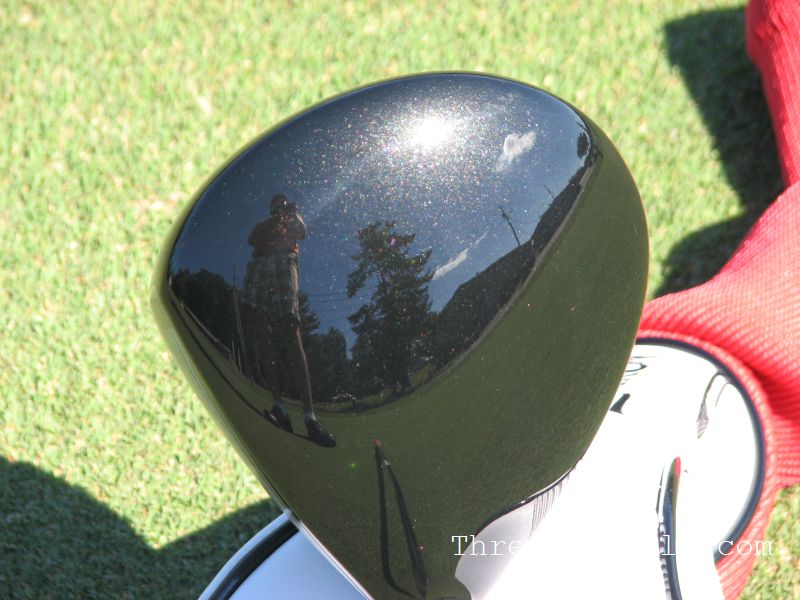

I call this one: Skyscape in driver head
The understated good looks continue on the sole of the club, where the Srixon logo and Z545 branding are nicely integrated into the grey sole plate and paint. What does stand out on the sole are the weights that comprise Srixon’s Quick Tune System. On the Z545, Srixon has included a fixed weight in the center of the sole close to the face, and an adjustable weight port closer to the heel of the driver. From the factory this port contains a 7 gram weight designed to lower the driver’s center of gravity and deliver a medium-high launch with enough spin to keep the ball online and in the air.
The optional weight kit adds a 3 gram weight for a lower launch angle and greater roll, and an 11 gram weight for a higher launch, at the cost of less roll. I hit very high tee balls, and I found that using the 3g weight made a noticeable and welcome change in my ball flight. Changing the weight requires only a quarter turn of the included wrench to remove the old weight, and another quarter turn to secure the new weight. Remember folks, in golf as in most things: righty/tighty, lefty/loosey.
Clean and functional, unlike your author
And while you’ve got the Z545 turned upside-down and the wrench in your hand is the perfect time to consider the adjustable hosel. That’s right, Srixon thinks that “all ability” players can benefit from the same sort of hosel adjustments found on their Z745 “player’s” driver. Loosen the adjustment screw on the bottom of the driver using the supplied wrench and adjust the head to any of 12 settings ranging from 0pen to neutral but 1 degree upright to full closed, seat the head back on the shaft and tighten until the wrench clicks.
Where the magic happens
I’ve always been skeptical about adjustable hosels – I figured that if I’m driving well I don’t need one and if I’m driving badly it won’t help, and like many “all ability” players I’ve been stubborn and insisted that I’d rather improve my swing than adjust my club. Somewhere along the line, however, I realized that fixing your swing is a luxury for golfers who have time to practice. Golf is hard enough, there’s no need for me to make it harder. I spent my warm-up for the first round I played with the Z545 adjusting the face angle to suit my swing, and I saw an immediate and very significant improvement in the number of fairways I hit. No amount of adjustment is going to save me when I make a really bad swing, but the Z545’s adjustable hosel turned what was a game-killing case of the rights into a driver I can live with.
You’re just a few clicks away from a better drive
Also helping in this department is the Kuro Kage Black shaft. In R-flex it’s 65 grams, and in all flexes comes stock at a very user-friendly 45 inches. Srixon claims that their Dual Speed Technology maximizes rotational efficiency to maximize clubhead speed at impact. What I notice is that it gives good feedback on what the head is doing, how the shaft is loading, and most importantly when and how the shaft is going to unload. Violent swingers might want to stiffen up a notch, but I doubt that anyone for whom the Z545 is a better fit than the Z745 is going to be hampered by the stock shaft offerings.
At the grippy end of the shaft is a red Lamkin UTx full cord grip. I’m a Lamkin fan, so I think that the grip is a nice change from the Tour Velvet or Winn offerings that are ubiquitous factory offerings these days, and the full cord gives positive engagement and faithfully relays the feedback from the shaft and head. Capping it all off is a crisp white headcover with the Z logo. All-in-all I think that the Z545 is one of the most attractive drivers on the market.
Pretty is as pretty does
Pretty is as pretty does, however. A good looking driver that you can’t control is like driving an exotic car: Everyone is jealous of you until you disappear into the woods for the third time. Fortunately the Z545 lives up to its good looks when you put it in play. With the hosel adjusted for my swing and the Quick Tune System adjusted for my ball flight, the Z545 wasted no time kicking my old driver out of the bag. My longest drives are a few yards shorter, but my normal drives are a few yards longer, and my average drives are ridiculously longer, thanks to all the yards I’m saving by not hitting so many balls in the woods.
For me, driving is the toughest part of the game. The combination of good looks, adjustability, and forgiveness in the Srixon Z545 makes the toughest part of my game easier. The Z545 is the newest addition to my bag, and while not even the Z can turn me into a long driver, I’m betting it can at least keep me on the grid.
You can learn more on the Srixon website.
You can learn more on the Srixon website.
If there were a Tropicana bikini contest for drivers it is doubtful that PING G25 driver would ever get to wear the victory sash or even crack the top 5. Yet, somehow PING drivers have been a steady contender in everyone’s “hot list” and a staple in golf bags for what seems like forever. Sure Bubba Watson swings a PING driver and is no doubt a flashy ambassador, but the brand as a whole still wears a one-piece bathing suit.
So does this mean the marketing folks at PING should be set out to pasture and replaced with a bunch of wizbang spiffed up go getters? I say no and I actually believe that PING has never set their sights on the sexy award.
If you think about golf clubs as girls, they can be divided into two groups: those you date and those you marry. What if PING is the marrying type? You know the one that does NOT make your life a soap opera, the one that does NOT break your heart, the one that does NOT stand you up, and the one that is NOT a potential train wreck every time you see her. Instead, what if PING is your steady, your life long companion, the one you know and trust, the one that has your back. What if being the girl you marry is what PING is going for? Too creepy? Stay with me . . .
I have had many PING clubs in my bag over the years and currently still carry a PING G10 five wood because it is the safest most consistent club I own. At 185 yards, I feel like I can land it on a dime and it gets me out of so many jams I am going to be hard-pressed to ever replace it. So, while it has been years since I had a PING driver in my bag, I was pretty darn sure I was going to enjoy reviewing it.
My PING G25 driver review started like buying any other PING club – the online fitting. While probably not as good as an in person fitting with a Pro, the online version does a good job of recommending the right shaft and loft. In my case, I am always right between a stiff and regular shaft as my swing speed is about 94 mph. For what it is worth, I ended up with the regular shaft 10.5 loft driver.
The club itself is not fancy but I would classify it as distinguished. Matte black with a simple alignment aid on the top and a shiny bottom that features only the branded PING G25. Worth noting is that even after 20 or so rounds, the bottom of the club has shown very little wear, which is very refreshing compared to many drivers we review that look 2 years old after a month of play.
As with most PING clubs, the first thing that comes to mind is forgiveness. While PING has definitely earned their reputation for forgiving with clubs like the G25 irons, they also make darn good player clubs like the S55 irons. With that said, the G25 driver is more on the forgiving side. That is not to say a player cannot benefit from the G25 driver. I am a 9.5 handicap and hit the ball straight but not particularly far. My average drive is about 225 with 265 being my outside range. I have reviewed about 5 drivers this year and the PING G25 driver is as long as any of them and longer than most.
Regardless of the distance, the reason the PING has remained in my bag for so long is that it just goes straight all the time. Even with mis-hits I am not wildly far off. The large clubhead gives you a tons of room for mistakes, but when you catch it just right it is a bomber.
Again, not super sexy but when I am hitting 12 fairways and never playing out of the woods, I am all in. I also don’t want to give the impression that the G25 is ugly, because it is far from that. It is just that you don’t have any extra glamour. It is your basic step up and smash it driver. Your working class bigstick.
Under the hood, the PING G25 driver does offer a touch of adjustability. You can change the loft by plus or minus a half degree which will make a 1% adjustment to the face angle. Per usual, I don’t mess with the setting, but that’s just me.
As I mentioned, the PING website takes you through a basic fitting which in part will spit out a recommended shaft. The shaft that came with my driver and was used for this review was the TFC189 which is weighted toward the butt end of the club in order to partially offset the heavier club head. I am a self-admitted dope when it comes to shafts, but I am convinced that the shafts PING uses are well matched to the club (plus they look super cool).
Hey what about the PING G30 Driver? Yep, the PING G30 driver has just come out which means the G25 driver is now an older model. Unlike many companies, PING does not roll out multiple versions of a club each year (which, by the way, I believe is a business model that is proving to be counterproductive for both consumers and companies). My guess would be that it will be the PING release cycle that becomes more normal as we enter into 2015. But, my point is, that even though the G25 is now one generation old, it is still a rock solid choice for the majority of golfers.
Anyone who plays to a 10-30 handicap is a perfect candidate for the PING G25 (and likely a bunch of single digit handicappers as well). At every level, PING nails it. The sound is great, the looks are fine, the adjustably is sufficient, the forgiveness is welcomed and the distance is plenty respectable. Get it, you get the whole ball of wax. Maybe you miss out on one “wow” factor, but you don’t get burned by a glaring deficiency.
So for all those married guys out there, when you go shopping for your next driver, think about your wife (I assume you love her). Think about why you are still married (besides the huge inheritaence from her dad). Yea, it is the stability, the dependability, the no surprises that keeps you together. Sure you might miss the wild nights in Vegas with that girl in the short dress, but in the end it just meant trouble. Meet PING: the girl you can marry.
Learn more on the PING website.
PING, TaylorMade, Titleist, Cleveland, Nike, we all have a perception of those brands that are based on the combination of experience and marketing. However, none of those names in itself has any connotation of the product’s performance. In other words, Nike is not an adjective or verb so it is only through years of commercials that we attach it to real feelings.
On the other hand, some companies choose names that are intended to incite an emotion. Hence the name Powerbilt – obviously it is supposed to infer an association with a driver that delivers what we all want – power. Ironically, it was the name Powerbilt that was at the root of my initial concern.
You see, it’s a bit of a catch 22. Without a flashy name, I likely would have never remembered Powerbilt, but the name itself was a red flag for a driver hiding behind a smoke screen of clever naming. Add the fact that Powerbilt’s most noted ambassador is not a golfer but rather an MMA fighter and you can imagine why I feared the worst.
Despite all of my initial concerns, reviewing products from new companies is always fun because I have no idea what to expect, so there is the chance I will be pleasantly surprised. Sure I had read about Powerbilt, but I had never seen one in person, let alone hit it. Therefore, I decided my first trial would be 100% straight to the course.
On that particular late afternoon, I walked right past the driving range and headed straight to the tee box (apparently everyone else is working at 1pm on a Wednesday). To be clear, there was literally no one else in sight so I even surprised myself when I exclaimed out loud “oh on my gawd” just after contact. No, not because I could tell I ripped it 325 (why is that the magic number reviewers like to use?) but rather due to the unexpected sound.
Softball bat is what I would liken the sound to, or maybe the old Nike Sasquatch, but definitely a loud “ting”. As I walked down the fairway, however, there was my ball in much the same place it always is (give or take a few yards).
Over the course of that first round I continued to hit drives to my typical landing spots with roughly the same accuracy and distance as I am accustomed to. Thankfully, the sound also became more of an afterthought rather than a jolt to my system.
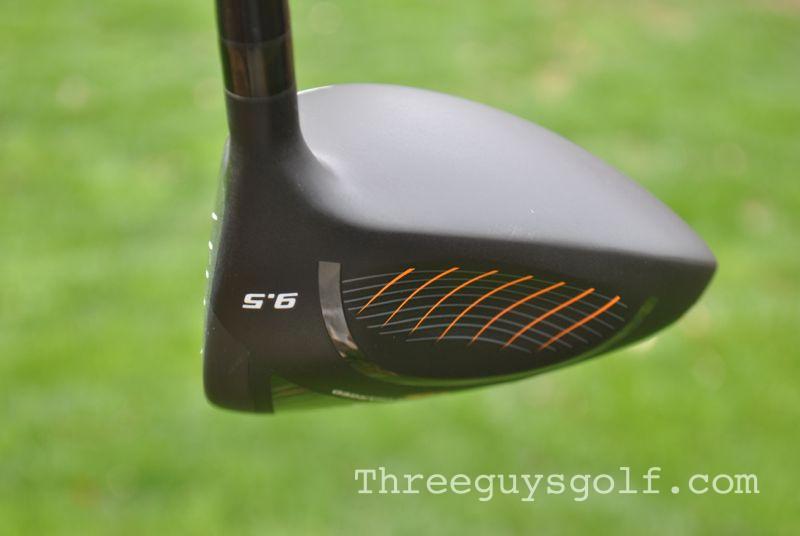
What I did notice though was my ball flight was lower than most other drivers I hit. This is in part due to the fact the driver has a 9.5 degree loft. Still, the ball definitely stayed lower than I am accustomed to, with the trade-off being that it also rolled out more than usual. NOTE: the Powerbilt DFX driver is not adjustable, which is actually 100% fine by me, but you do need to make sure you get the right loft.
In addition to the supercharged name, Powerbilt also is literally super charged with nitrogen. Now I am no chemistry major but I am pretty sure that this is also what is in my son’s paintball gun. Clearly, the nitrogen in the driver is not exactly the same as what is used to power projectile war paint, but you get the idea. So in the age of endless widgets to make the ball go farther, I am not in a position to say whether this chemistry experiment works, but I can tell you that over the course of 8 or 9 rounds I hit a bunch of drives farther than normal and with roughly the same forgiveness.
Truth is, one of the reasons I was intrigued by the Powerbilt driver was because I had read the results from My Golf Spy’s driver tests and the Powerbilt was near the top for guys with sub 100mph swing speeds (hey, that’s me). Unlike MGS, we are not exactly scientific in our approach to reviews. On the other hand, we play in real conditions on courses that we are extremely familiar with so understanding distance and accuracy is something I am comfortable speaking to, and there is no doubt in my mind that the Powerbilt stacks up with the big brands, AND, considering the fact that it retails for significantly less makes it an actractive alternative.
As with the name, the Powerbilt looks are unique. While top view is pretty plain Jane (sporting a matte black finish and midsized head), the bottom incorporates orange stripes to give it a high-tech look. The reality is, however, the bottom of the club should be a non-issue as you never see it. On the other hand, how it sets up and how it looks at address are important. For me, I like the clean topline with a simple alignment mark. The face is also deeper than many drivers which helps with confidence to make square contact.
The Powerbilt DFX driver also comes with a number of options for aftermarket shafts. In my case it was the Fujikura Motore F3. While I am a not a shaft geek, I do believe that adding aftermarket shafts from companies that specialize in just that is always an advantage.
So if you are the kind of guy who likes to buy new drivers, but you’re not thrilled about dropping $400, the Powerbilt is a great option. The Tour model runs $299 and the MOI version just $249 so you can save a chunk of change. You can see the whole line on the Powerbilt website
Confession: until 6 weeks ago, I didn’t know jack about Tour Edge. In fact, I’m still not quite sure whether “Exotics” is part of their name or a specific line of clubs or what. Now that I’ve hit the XCG7 4 Hybrid for a few weeks at the range and on the course, I frankly don’t care. The short version of this story is that the Exotics XCG7 Hybrid is now taking up residence in my bag, while my once kinda-beloved 4 iron is sawing logs in my trunk.
Back to my initial cluelessness with Tour Edge and their products – I remember always seeing their clubs being reviewed in the Golf Digest Hot List, but my eyes sort of glazed over the name, me figuring this was more of a knockoff or lower-tier line of clubs. After doing some research, I see that they do have some clubs carrying the “Bazooka” moniker, so you can’t really blame youngerMe for that perception while flipping through the pages. What my research also turned up – the Tour Edge Exotics fairway woods are both respected and utilized on Tour, without paying anyone to play them. So we know they’re legit.
Turns out the whole business model of Tour Edge is geared to put high quality clubs in the hands of golfers without the “inflated” prices that result from mass marketing and hype-machining. So that explains why I never knew much about them, and a lot of you out there are probably in the same boat. For the record, if you visit their website at www.touredge.com, you’ll quickly see that they are not running things the same way a Taylor Made or Nike or any other mainstream clubmaker does . . . I’m not saying better or worse, it’s just a different approach. As examples, I’ll just say that their press releases have not been updated in some time and they offer golfers the option to put a corporate logo on the clubs. Not exactly blueblood stuff, and I think that might give some folks reason to question their legitimacy as a true player in the market.
But as we all know by now, or should know at least – none of that matters. How’s the club?
I tested the XCG7 hybrid 4, with 22 degrees of loft, fitted with the stock Fujikura FUEL shaft in Stiff Flex. Overall the club has a ‘player’ look, in that the classic head shape is a muted/matte gray with no alignment aid, and the shaft is also a matte gray/black. In other words, there’s no bling or flashy stuff going on, it just looks like it wants to be a serious club. The top of the club does bear the word “Exotics” in muted white, located on the back heel, but it is subtle and barely noticeable at address.
Hitting this club follows along the same understated-but-serious path . . . the feel at impact is soft but solid, same with the sound. If you put a blindfold on and took three swings, you’d think “okay, this is a good club”. The kicker, though, is when you look up and actually see the flight of the ball – so high and straight, but with enough forward momentum to never seem like a ballooned skyball.
I had actually never swung a 22 degree hybrid before (always lower) so I suppose this observation must be taken with a grain of salt, but in my first range session I had trouble believing that this club could possibly be hitting the ball 190 or so yards like my 4 iron because it was honestly flying twice as high. And of course, my range of choice is one of those classics where you can’t really tell where the ball lands, so I was thinking there was still a chance that I was just hitting high pop-ups with this thing. It felt great and looked great, but I still couldn’t believe that something climbing that high would also be moving the chains.
Once out on the course, however, my fears were put to rest – yes, this club somehow hits it a mile high and the same distance as my 4 iron – beauty. It still catches me off guard every time I pull this club out on a par 5 layup or a long par 4 – I swing, it feels solid as hell, I look up, it seems way too high to do anything good, I wait a while, it lands where I was aiming.
Because I am forced to think about these things for the sake of reviewing a club: the shaft and head of this club feel so well-balanced through the swing that when you do hit a great shot, it feels like it was just so damn easy and exactly how it was all meant to go down. But not in a super game-improvement manner, mind you – this club allows you to work the ball a bit, and the softer feel is solid in a way that you know you’re not cheating to get the ball up into the air at the cost of all else. In other words, I don’t think Tour Edge is trying to express-deliver more distance or higher launch or what have you, I think it is just a quality, well-balanced golf club that provides a high level of performance.
As I said before, until now I had only hit hybrid 2s and 3s, and I could never shake the idea that they were more of a fairway wood than an iron. I knew they were designed to find greens, but I was only really comfortable using them when I had a little less than a 3 wood’s distance to find a fairway. With this XCG7 4, I am now totally confident in trying to drop a ball on a green with a hybrid in my hand. I’m hitting it so straight, high, and with such control that it no longer feels like a risk/reward scenario to forgo the iron and reach for the lumber.
You can see all of the Tour Exotics clubs on the Tour Edge website
OK, at some point in time TaylorMade’s ability to produce new outstanding club after new outstanding club has to come to an end, right? That’s what I’ve thought since first being introduced to the new Burner 2.0’s during a Demo Day nearly three years ago, and since then all they have done is crank out great club after another with virtually zero failures.
Ever since that first swing with a TaylorMade club I’ve been a convert. I traded in all the gear I had to get those Burners in my bag. But I didn’t stop there. I soon added the Rocketballz Hybrid, then the Rocketballz 3 Wood and eventually the Rocketballz driver. That driver stayed in my bag until last fall when I was given the new TaylorMade SLDR to review.
Technological advancements in the golf industry seem to happen more frequently than a traffic jam on the 405, but nowhere does the reign of terror on distance, speed and control seem to end. TaylorMade – keeping on point with more bang for your buck with every club – has, wait for it…. done it again with the new SLDR Fairway Woods.
Let me first preface this review with a little info. I was real hesitant to do this review. I mean REAL hesitant. My struggles with the long clubs have been well documented within my site and for what seems like forever I’ve been trying to associate myself with a fairway wood that I could fall in love with. My Rocketballz 3wood is that club ever since Wade and I started working on my swing. The club is a monster and I probably hit it better than any other club in my bag.
Hopefully, you can understand why my level of anxiety was elevated. The last thing I wanted to do was bring in some alien club to my bag and destroy the beautiful relationship that was YEARS in the making. After spending some quality time learning how to hit the SLDR Fairway Wood, however, I’ve recently tossed aside my old, out of date, decrepitly aged Rocketballz 3W to the “extra club” bag that resides in the cobwebbed corner of my garage.
TaylorMade took the same technology they instituted in the SLDR Driver, moving the center of gravity lower and to the front, and replicated the wildly successful SLDR Driver with their new SLDR Fairway Woods. You’ll notice right away the crown of the club has the same finish as big brother and looks equally appealing to the eye. I have to admit I was actually a fan of the pasty white craze that overtook the industry when the R11 was released, but with the SLDR line I am much more content looking down at the silky charcoal-gray head. It practically lulls you into a relaxed state as you prepare for some Smashing!
Aside from the available stock shafts and grips and the fact it’s a bad ass on the course, the appearance on the top of the club is where most of the similarities with the driver end. The underside of the club continues the TaylorMade trend of a modern approach to club design. Sharp edges and a bold metal finish highlight the club’s hidden beauty along with one familiar piece of technology, the Speed Pocket.
Our first sightings of the Speed Pocket came back on the Rocketballz fairway and rescue clubs and it appears it’s here to stay. Anytime a club manufacture continues with a successful feature and then makes improvements to it you know they’re on to something. This time around the TaylorMade engineers decreased the size of the speed pocket and chose to fill it in with a polymer so there’s no more clean-up after every swing. And a big thank you to the man in the white coat who obviously had been playing with a Rocketballz Fairway club and was clearly just as frustrated as everyone else with that little flaw. Bravo sir, bravo!
Aesthetics aside I was eager to get out and see how well the club did what it was designed for. Which I’m certain is why you’re reading this, so let’s get to it.
Not having any time to work with the club since I received it, mainly in part to some pretty long soccer weekends, I broke a cardinal sin and took a virgin club with me to the course to use it for my round. The first swing I took with the club was about 20min before we were called to the first tee. I even waited to pull of the wrapper. Freeing the club from its plastic prison and feeling like I just won the lotto, I tee’d up a low ball and let it fly.
This is when things went incredibly south for me, and quick! I likened it to performance anxiety. The simple task of hitting a golf ball, weather I reared back and let it fly or just tried to punch it 75 yards down the fairway, became a daunting task. I couldn’t make decent contact at all! I looked over to the new club in my bag and proclaimed “This never happens to me I swear!” but the SLDR wasn’t interested in my shortcomings.
That’s what a serious lack of practice can do to your self-confidence. Fearing a blow-up hole on the horizon I was unwilling as ever to pull the SLDR from my bag throughout the round. When I approached a hole that required less than driver I reluctantly pulled it. With my inner stress at an entirely new level I stepped up to the tee box and absolutely cranked one.
I swear, off in the distance, I heard my old Rocketballz fairway wood from the garage back home scream out “Nooooooooo!” as the ball went hurling through the air. It was the perfect swing at the perfect time and the results were perfect. The next couple of swings I took with it literally amazed me. The ball flight, albeit much lower than I was used to, was outstanding and several times when the ball came to rest approximately 230 yards down the fairway I was utterly speechless, as were my partners.
Wanting to feel that level of excitement with every swing had me spending the next couple of days at the range. With the 12 different loft adjustments that can be made there is a learning curve that goes into getting the club dialed in so it will perform. I highly recommend seeking out a professional fitter if available so you can see some actual results on the factors of your ball flight. I recently took my SLDR Driver into Golf Galaxy and was shocked at how much distance I increased my drives with a simple adjustment to the loft. With the SLDR fairway wood, lofting the club up really changed how the ball reacted much more than I had expected when comparing the similar adjustments I made with the SLDR driver. That reason alone is justification for seeing a pro.
Once it was correct though (final adjustment landed me at +.5°) I started really seeing what makes the SLDR special. An easier swing at a higher loft equaled more distance and greater control. Who doesn’t want that from a fairway club? When you add in the fact that the launch angle is lower than my previous fairway wood, it just gives me another weapon off the tee in the blustery weather conditions we often have here in the Vegas valley. The wind can be a beast at times but now I’m more prepared for such situations with the SLDR in my bag.
Chalk up yet another successful club innovation for team TaylorMade. The SLDR Fairway Wood has firmly supplanted my previous “go to” club, the Rocketballz 3W, and has me pondering another upgrade with the SLDR Rescue now available as well.
You can read all about the SLDR line of fairway woods on the TaylorMade Website. The SLDR Fairway Wood retails for $249 and can pretty much pickup one at any golf retailer in the country.
I’ve got my work cut out for me today, for sure. I have spent the last few weeks testing out Cobra’s complete Bio Cell and Bio Cell+ lineup, and now it’s time to spill the beans. Take a breath, this will be a complete review of the Bio Cell driver, fairway wood, hybrid, and irons, as well as the Bio Cell+ driver and irons. I’m still not quite sure how to break this down in a way that will not annoy/bore/annoy (in that order), but like a good Three Guy, I’m sure as hell gonna try.
Continue reading
There’s been a lot of noise surrounding Nike’s new VRS Covert 2.0 Tour driver over the past few months, and with Tiger and Rory both dropping them into the bag in 2014, I think there’s good reason for the hype. Deciding that my ballstriking was easily on par with those two chumps, I’ve been out testing Nike’s newest offering to see what’s up.
That was a joke.
With both the VRS Covert 2.0 and VRS Covert 2.0 Tour, Nike has gone with a bold red look that is visually striking and, quite frankly, badass. A small white swoosh is placed from 7:00 – 8:00 on the crown of the club, which seems odd at first but becomes a non-factor within seconds. One way the Tour version is distinguished from the regular Covert 2.0 is that its clubface has a muted black/gray color, which looks pretty cool on its own and really cool in comparison to the regular steel-colored face on the Covert 2.0. Way to make us feel special for stepping up to the big boy club, Nike! Seriously. The Tour version also comes with a red Nike Tour Wrap grip (made by Golf Pride), which stands out and looks cool.
I’ll spare you the techno-speak pertaining to what Nike has put under the hood, as you can always read about that stuff on their website. Simply put, the Tour version is designed to create lower spin and lower ball flight for better players. Like any “better player” club, a little forgiveness is traded in for workability. The 2.0 version is an evolution of last year’s model, again utilizing a cavity back design, something called “Fly-Brace” technology, and a larger face utilizing variable thickness intended to create hotness. “Cavity back” might sound weird for a driver, but in person it looks plenty cool and reasonable, nothing gimmicky about it.
The club also boasts Nike’s FlexLoft adjustability system, which is a very solid rig that allows loft to be adjusted from 8.5 degrees – 12.5 degrees and has 3 face angles: Right, Neutral, and Left. It is important to note that the FlexLoft systems allows you to adjust loft and face angle independently, so you don’t have to worry about inherently tweaking your face angle when you change your loft.
On to the range! You’re going to have to bear with me here, as I have always vowed to give the whole truth and nothing but the truth, and sometimes my annoying personal story can help paint the picture: the Nike Covert 2.0 Tour taught me a valuable lesson in clubfitting right off the bat, more than any previous driver had. When I first swung this club, I was shocked at how horribly I was hitting the ball. I actually started to panic over the future prospects of my hacker golf career . . . I knew “Tour” versions were for true adults, but I had no idea they could be this finicky. But then I remembered that this baby was adjustable, and that’s when the clouds began to part. The club arrived at a 10.5 degree loft and a neutral face, which sounded appetizing enough to me at first glance. But all I was doing was hitting low laser slices that felt like hitting a rock with a broomstick. And while I’ll admit to having some “minor” issues with my stroke, slicing the ball is not one of them.
Duh, let’s use this wrench and try tinkering with it a bit. I adjusted the face angle to “Right”, which for a lefty means draw. Holy cow, now it looks like a normal driver! The draw face brought the Nike over to my side . . . turns out that Nike’s “Neutral” setting is actually about 1.5 degrees open (another reminder that Tour players and low handicappers are freaks).
Anyway, after making the adjustments, I started hitting some legitimate balls. Legitimate low, fast, knuckleballs that is. I never knew how much spin my previous driver was generating until I saw the flight of my ball off of the Nike . . . these things were screaming off the face and just staying low, hurdling across the range at about 20 feet on the altimeter. By now I’ve learned two things: 1) this face is hot, and 2) this driver lives up to its low spin claims. In fact, I ended up finding my nirvana at a whopping 11.5 degrees of loft. 11.5! I always thought you had to show an AARP card and a note from your doctor to get permission to wield that number. I should mention that my driver came with Nike’s stock Mitsubishi Rayon Kuro Kage shaft in Stiff flex, labeled as geared for a “LOW” trajectory. Okay, do you get it now? Ball flight leans toward low.
I’ve since played with this driver for a few rounds and a few range sessions, and I have some general thoughts to share about my experience. First and foremost, this sucker is LONG. I would attribute this to both the lower spin and the hot face, as well as my own feeling that the club feels “heavy”, like when you use a heavier bat in baseball and get more smash. When you get a’hold of this driver, it goes. I had several drives that were 10-15 yards longer than my normal drives on certain holes, and while a few yards here or there could be due to conditions, there were enough instances of walking past my usual spot to know that the distance thing is legit. This was confirmed at the local Golf Galaxy launch monitor – well struck drives were 8-10 yards longer with the Nike Covert 2.0 Tour than any of the other 4 drivers I tried. And to be fair, this might be the only driver I’ve hit in a while that didn’t even really demand a walk-off or computer session . . . whenever I striped one I could tell just by eye that the ball was humming out there a bit faster and further than my usual.
Now, obviously I didn’t hit every ball perfect. I would say that for slight mis-hits, this club performed great – no significant loss in distance and the dispersion was very tight. In fact, on a few holes I would hit a less-than-satisfying drive that would come out a bit lower than the norm, feel kind of lame, and it would end up rolling out just as far as one that I ripped. Seemed like the 85% hit created even less spin and the ball just rolled forever. There is a steep drop-off, however, when you put a bad move on the ball; the club punishes you with a negative impact feel and a not-so-good shot. Living up to its Tour name, this driver definitely demands a slightly better stroke out of its owner than the average driver. This is not very scientific, but I’d say anything less than 80% swing execution and you’re not having any fun . . . perhaps time to check out the Covert 2.0 if you’re worried about that.
The feel of this club, when hit right, is fantastic. It has a modern (and definitely unique) ‘ting’ sound to it, but impact has a little classic ‘CRACK!’ feeling mixed in with the modern trampoline vibe that is wholly satisfying. When you rip this driver, you know it, and you look up with dollar signs in your eyes.
Over the span of my time swinging this club, however, I have had some funky thoughts about how important pure distance is to me. I continue to think “heavy” when I hit this club, and this could very well be what Nike was shooting for in their Tour version. But when I hit the Nike alongside two or three other drivers, I always feel like I’m swinging a little more lumber, and maybe my swing isn’t quite up to snuff because if I get lazy at all, the whole schebang feels a bit sluggish. To be fair, the lazy drives usually end up moving out there just fine, I’m just not always quite sure how it all came about.
But that’s just my game. I am sure that there are better players out there that can take full advantage of what this club can do (possibly with a modified shaft). I just want to be clear that this is not a plug-n-play driver that ends up being like all the rest once you wash off the logos and paint jobs. In fact, I can’t remember ever being so anxious to watch other people try a club to see what they think (I wish I knew some lefties). The Covert 2.0 Tour is its own type of beast, and I’ve hit enough insane bombs with it to know that for the right player this thing will be an absolute monster.
Learn more about the Nike VRS Covert 2.0 Tour driver at their website.
A couple of years ago, Matt wrote a blistering post about how dumb throwback clubs were. Specifically, he took a few shots at the then new Cleveland Classic. Luckily, Cleveland has a sense of humor and the brass to call his bluff. A week later a shiny Cleveland Classic driver showed up and Matt was forced to come to terms with his new favorite driver. Thanks to Cleveland, for over a year now I have had to endure Matt yammer on about how great a driver the Classic is. To this day, he pretty much compares all drivers to that club (even though he still thinks it looks kind of stupid).
Continue reading
Here is something new . . . TaylorMade has another driver on the market, the JetSpeed. Yea, we know, they have released about 14 new drivers this year but the fact is they are not so much trying to get you to upgrade every 3 months; instead they just want to make sure they always have at least one driver on the “just released” shelf. I mean, if you are gonna buy a new driver then you might as well get the newest new driver right?
It’s an old joke by now, but it really is tough to tell what even TaylorMade thinks of each driver they put out. Is the JetSpeed bigger and better than the Rocketballz? Better than the SLDR? I think the best way to answer that question is by price point: the JetSpeed retails a cool $100.00 below the new SLDR driver, so it’s safe to say that the JetSpeed is aiming for the medium price range. What I expect from a club in this category is top-tier performance and maybe a few less bells and whistles.
Turns out I’m a genius, because the JetSpeed actually is a fairly dramatic change from most of the drivers that have hit the market in the past 18 months in that it is only “partially adjustable”. While most drivers allow you to adjust loft and angle, the JetSpeed only allows for loft adjustment. For this guy, that is a welcome reprieve. Maybe I am alone in this camp, but I have never adjusted the angle. It comes neutral and I leave it neutral. I am just more comfortable getting a club that fits my swing rather than a DIY version. God knows I don’t need to add another lever to the tweaking arsenal.
Under the proverbial hood the TaylorMade JetSpeed incorporates the new Speed Pocket, which is supposed to promote less spin and greater ball speed for shots hit low on the club (where most mis-hits occur). Additionally, they also filled the Speed Pocket in with a polymer so you don’t have to clean out the slot after you chunk your driver (or in the case of the fairway woods, after every shot). You can get the JetSpeed in three different lofts and adjust each one with plus or minus 1.5 degrees of loft. This actually makes sense to me as tweaking the loft seems a lot less intrusive to your swing.
So yea, you are probably gonna add another 17 yards to your game (heavy sarcasm). Actually, I, along with TaylorMade will make no such claims, but I am intrigued by the idea that a club is designed to perform better when the user screws up. It seems like most clubs are designed to perform for when you swing perfectly without much concern for how most people swing the club.
Speaking of which, isn’t it time for someone to design a new Robbie Robot that has a nasty over the top swing? Or one that can, for no discernible reason, yank it dead right (they could call it the Murley Machine). Anyhow, you get the idea, we all have less than perfect swings so it is at least comforting to know TaylorMade was thinking about us when they designed the JetSpeed.
Picking up the JetSpeed for the first time, it is noticeably lighter, which of course is a result of TaylorMade wanting to promote a higher swing speed. This is not to say if feels too light or whippy, it just doesn’t feel like you are swinging a mallet. The sound is not a big thwack nor a whimpy ting. Just right in the middle where it neither annoys you or makes you take notice.
From an aesthetics standpoint, the TaylorMade JetSpeed is also fairly plain Jane in comparison to some of the blinged out versions we have seen recently. The JetSpeed has a simple matte black crown with subtle alignment markings. Frankly, I am thankful to move away from white crowns as they have always seemed too bright for me. Bright clothes, yes, bright driver heads, no. In my mind the JetSpeed seems to just harken back a few years. Whether it be limited adjustability, matte black crown, or the stripe on the head cover, the vibe is way different than recent TaylorMade drivers.
Now for the Three Guys Golf test lab. What, you didn’t know we had a fancy test lab? It is called “my home course” that I have played 500 times and know exactly how far I can, and usually do, drive the ball on every fairway. The results: I hit the ball as far as I usually do. Sometimes I hit it really well and it goes far (I actually had my career long drive on #17) and sometimes I don’t hit it very well and it does not go far. Guess what, I am a 10 handicap and that is how it goes for us.
Overall, I really do like this club. For me, there was no break-in period. You know how with some drivers it just does not feel right and you need to gain a symbiotic relationship with it? The JetSpeed was easy to hit right out of the gate and it never felt squirrelly. Making it more appealing is that it is relatively cheap. Because it has no angle adjustment, you can basically save $100.
This makes total sense to me. Why pay for something if you don’t want it. If you don’t like sunroofs then don’t get the $1000 upgrade – duh.
So if you are in the market for the latest and greatest but want to maybe save a few bucks, check out the TaylorMade Jetspeed. You can learn more on the TaylorMade website.


